REVUE
When the future of rock & roll was in Windsor Terrace... Remembering Lauterbach's
 by Ranaan Geberer
photos by J. R. Rost
by Ranaan Geberer
photos by J. R. Rost

 by Ranaan Geberer
photos by J. R. Rost
by Ranaan Geberer
photos by J. R. Rost
Over the past few years Red Hook has seen the opening of two Amazon warehouses that have brought more trucks to our mixed-use neighborhoods. Many of those who are concerned about increased truck traffic point to high rates of asthma.

In this series we will look at what the science says about asthma, our environment and similar circumstances elsewhere. We will also look to see how technology is working to allow us to live safely among industry in the future.
We start with a look at Mott Haven and Hunts Point, an area in the Bronx home to both low income neighborhoods as well as an active shipping and receiving industry. It is known among healthcare professionals as “Asthma Alley.”
Those neighborhoods have some of the worst air pollution levels in the city. Former State Senator Jeffrey Klein used the term to describe its asthma rates back in 2005. According to a 2019 article in The Guardian, residents “need asthma hospitalizations at five times the national average and at rates 21 times higher than other NYC neighborhoods.”
Mott Haven is 97 percent black and Hispanic
481 Van Brunt Street, 8A Brooklyn, NY 11231 (718) 624-5568 www.star-revue.com george@redhookstar.com
Editor & PublishEr George Fiala
NEws Nathan Weiser Brian Abate
FEaturEs Erin DeGregorio
CulturE Roderick Thomas ovErsEas maN Dario Muccilli roCk Kurt Gottschalk Jazz George Grella Film Dante A. Ciampaglia books Michael Quinn CartooN Marc Jackson
wEbmastEr Tariq Manon kids Editor Marie Hueston dEsigN George Fiala ads Liz Galvin
Merry Band of Contributors

Michael Cobb Joe Enright Michael Fiorito Jack Grace Mike Morgan Nino Pantano
 by Erin DeGregorio
by Erin DeGregorio
After being in limbo for nine months, New York v. New Jersey—also known as the New York-New Jersey Waterfront Commission case—will soon be litigated in the U.S. Supreme Court, with oral arguments being made beginning February 27, 2023.

The issue, as it stands, is whether the Supreme Court should issue declaratory judgment and/or enjoin New Jersey from withdrawing from its Waterfront Commission Compact with New York, which grants the Waterfront Commission of New York Harbor broad regulatory and law-enforcement powers over all operations at the Port of New York and New Jersey.
While New Jersey has sought to unilaterally withdraw from the decades-old bi-state agreement and, in turn, the commission of New York Harbor due to outdatedness, New York argues the exit would be in violation of the Compacts Clause of the Constitution.
responsibility to New Yorkers to stop New Jersey’s unlawful actions and preserve the ongoing work of this law enforcement agency.”
“Governor [Phil] Murphy continues to believe that New Jersey should have the right to withdraw from a nearly 70-year-old commission that does not meet today’s needs or serve New Jersey’s interests,” said Bailey Lawrence, a spokesperson for the New Jersey governor, as reported by Law360 on October 24, 2022. “He looks forward to the case being argued during the Supreme Court’s upcoming term and remains optimistic that New Jersey will prevail.”
FOR EDITORIAL, ADVERTISING OR EMPLOYMENT INQUIRIES, email george@redhookstar.com

The Red Hook Star-Revue is published every month.
Founded June 2010 by George Fiala and Frank Galeano
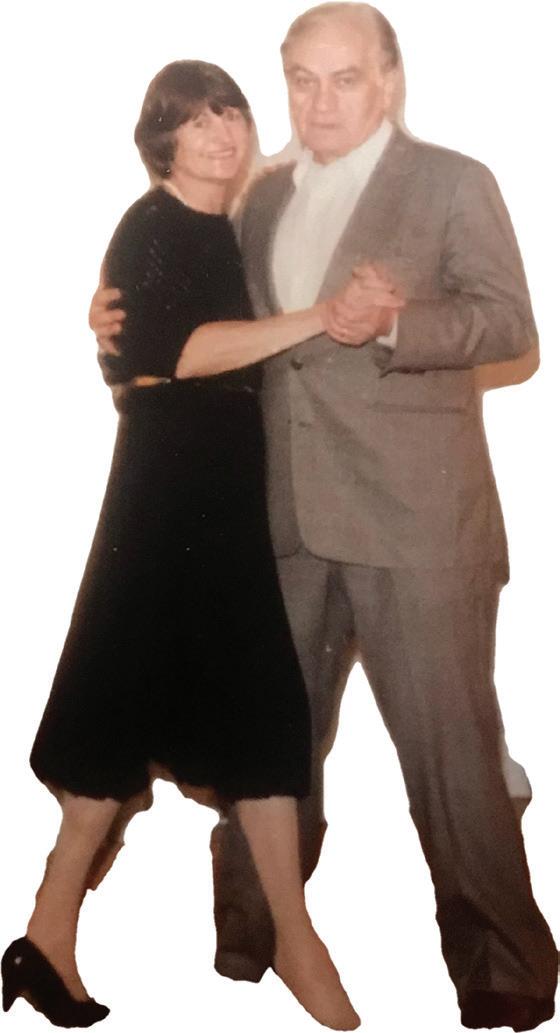
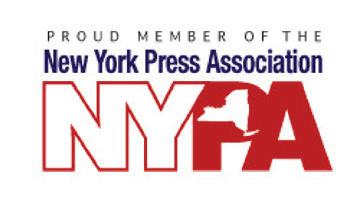
“Protecting the safety of New Yorkers and our vital industries is my top priority, and we cannot afford to lose the Waterfront Commission’s unique authority and expertise in combating crime at our port,” said New York Governor Kathy Hochul on March 14, 2022, when New York filed legal action in the Supreme Court to block New Jersey from terminating the Waterfront Commission. “In light of current geopolitical uncertainty, the termination of the Waterfront Commission would cause immediate and irreparable harm to New York state, from increased crime to higher prices to employment inequities. It is our
“Whatever kinds of regulations, of course, that we’d have today would have to reflect the kind of new reality of labor and commerce on the ports, which are significantly different from the 1950s,” said Peter Catapano, history professor at City Tech, on Dec. 9 during the Brooklyn Waterfront Research Center’s breakfast talk webinar, titled “What is the New York-New Jersey Waterfront Commission…And Do We Still Need It?” The three-person panel discussed, in part, the origins of the Waterfront Commission, its legacy, and the debate over whether the Commission should continue.
Following World War II, national attention was primarily drawn towards the existence of organized crime and its influence down at the docks thanks to The New York Sun’s Macolm Johnson and his 24-article series, “Crime on the Waterfront” (which was published in 1948, won a Pulitzer Prize for
local reporting in 1949, and inspired the film adaptation, “On the Waterfront,” that was released in 1954). In 1950, the U.S. Senate Special Committee to Investigate Crime in Interstate Commerce was created to investigate crime, particularly in the shipping industry, as Senate hearings became increasingly covered by newspapers as well as shown in local theaters to the public. A year later, the New York State Crime Commission identified forms of labor racketeering, extortion, and union corruption, and issued a report with numerous recommendations— including the creation of the Waterfront Commission of New York Harbor. The Waterfront Commission was established in 1953 after being passed by both state legislatures of New York and New Jersey and Congress as well as being signed into law by then-President Dwight D. Eisenhower.
The primary goals of the compact were to police local organized crime and end corruption at shipping terminals in the two states, ultimately replacing the daily “shape-up” (in which prospective workers forcibly competed against one another to secure work despite union membership status) with a state-run employment center. A host of regulations were ushered in, those with criminal records were barred from serving as union officials, and containerization later gained popularity in the 1960s.
To put the workforce into context, about 40,000 to 50,000 workers were showing up at the docks in 1953 and about 8,000 registered workers were (continued on page 12)
My current brain first came into existence in the 1950's, after the two world wars and the Great Depression—right in the middle of the Cold War. Growing up through the Bay of Pigs and Vietnam, we were all taught that the Soviet Union was the big enemy, making the threat of nuclear disaster always lurking.
I never really met any Russians, so I had no reason to like or dislike them. I did have a friend whose parents were from the Ukraine. He hated Russia with a huge passion, but I just thought he was weird that way.
The 1980's brought us Ronald Reagan, a cold war warrior, whose big foreign policy goal was defeating the Soviets. Proxy wars, in which we supported one side and the Soviets the other, proliferated and the expense helped weaken Russia economically. What made things worse for them was a plunge in the price of oil in the late 1980's. Oil was then, as now, a big part of their national income. I remember paying less than a dollar for gas on a drive through New Jersey back then.
A lack of money basically brought down the Iron Curtain. People saw that Communist life was less comfortable than a Western existence, and the eastern bloc and the 'stan' states left the union, leaving Russia to itself.
I remember wondering why the new Clinton administration wasn't more helpful to the country that was supposedly our big enemy all those years. It ended up that the 1990's were horrible for the average Russian. You would think that a whole country that
was against the West needed to have reasons to be for the West if we were going to establish a good, long-term relationship.
Instead, we sent them dubious economists, including Jeffrey Sachs and David Lipton to give them "shock therapy." That policy is the opposite of the term "Develop, Don't Destroy," used by those against radical real estate development plans in Prospect Heights in the 2000's.
Shock therapy left ordinary Russians on their own, forced to adjust to an unfamiliar capitalism without any help or education. The result was to create fabulously wealthy oligarchs who took advantage of the plan and took all the state businesses for themselves, and an impoverished rest of them in which alcoholism and suicide rates grew exponentially throughout the 1990's.
Seemingly we didn't care at all. Instead we watched as a former Soviet spy Putin was given the reigns of government by promising to restore 'order' and fix things.
Fast forward to today, and the same Putin threatens to break asunder established liberal democracy, returning us to a world of nuclear fear. I spent almost a decade studying international relations on a graduate school level, and our responsibility for Russia's situation was never discussed.
We did study the Marshall Plan which sent lots of American aid to all of Europe, included the defeated parties, to help them rebuild after World War II. A big reason was to avoid the disas-
ter of the first World War. The revengeful Versailles Treaty which ended that war set the stage for the next one, as Germany was punished and instead of help, were made to pay for damages. While I always liked Bill Clinton, I consider his lack of economic help for our former cold war enemy his greatest mistake.
Finally, this month, I read somebody who agrees with me. Right after the Ukraine invasion, Russian diplomat Boris Bondarev very pub-
licly resigned, defected and spoke out against the war. This month, in an article in the esteemed Foreign Affairs magaine, he writes:
"If Ukraine wins and Putin falls, the best thing the West can do isn’t to inflict humiliation. Instead, it’s the opposite: provide support... Providing aid would also allow the West to avoid repeating its behavior from the 1990s, when Russians felt scammed by the United State."
And avoid a future leader like Putin.
One of Red Hook's unique situations is that while we kind of consider ourselves a little village in the midst of a big city, we are not really represented by any sort of government. The Community Board is mostly concerned with Park Slope, Carroll Gardens and Gowanus. Red Hook is an afterthought, both in policy and representation.
The City Council is the next rung. For a short while, it seemed that we had a big ear in Carlos Menchaca, as he actually lived here. But he lost interest and was succeeded by Alexa Aviles, who tries her best but the main part of the district is Sunset Park, which is where a lot of her efforts naturally go to.
Power in Red Hook is disparate and uncoordinated. Natalie Campbell, of the Summit Academy, once tried to bring coordination and collaboration, but that lasted less than a minute.
For many years, we had an active Civic Association, led by community leader John McGettrick. But nothing last forever, and John had to move on. Now, when anyone wants to do something in our neighborhood, like add to the cruise ship schedule, they just go ahead and do it, because there is no platform to bring it to to see what we think.
On Wednesday, January 18, I will be at San Pedro's on Van Brunt, eating tacos and ready to talk to anyone interested in reforming our association. If you want to get in touch beforehand, call or text me at 917 652-9128 or write me at gbrook@pipeline.com

A new developer, Madison Realty Group (MRG), recently acquired the former LICH sites at 350 Hicks Street and 91 Pacific Street from the original developer, Fortis. MRG will begin construction on 350 Hicks Street in Q1 of 2023 and work on 91 Pacific Street in Q3 of 2023.
There will be no changes to the height of the buildings, but there may be changes to the exterior design. Fortis had not been communicative with the community, was behind on the project, and their promises to upgrade and maintain the playgrounds had gone unfulfilled. In a sign of progress, MRG representatives recently attended the Cobble Hill Association’s annual meeting and the recent LICH community task force meetings. I am very pleased that MRG took on the responsibility for performing muchneeded maintenance of the two Henry Street playgrounds and the adjacent sitting park, and they will soon conduct critical repairs to Tot Playground.
Fortis continues to own and have responsibility for remediation at other sites, including noise mitigation at the infamous “whistling” building located at 347 Henry Street.
NYU Langone Health’s new ambulatory care facility is scheduled to open in early spring of 2023; more services, including cardiology, gastroenterology and orthopedics will be offered. Once the new emergency department (ED) is opened, the current ED on Amity Street will remain open for 30 days before closing, so there will be no lapse in access to emergency services.
NYC Parks issues request for proposals at Cadman Plaza NYC Parks has released a Request for Proposals (“RFP”) for the operation, maintenance, and development of a new café at Cadman Plaza Park in Downtown Brooklyn. Cadman Plaza serves as a focal point for the entire Brooklyn Heights community and is an ideal location for a new café. The park is frequented by families, joggers, and dog-walkers, as well as commuters
and local employees. The RFP offers a unique opportunity for a prospective proposer to transform an existing building into a brand-new café.
“Cadman Plaza Park is a beautiful open space with so much potential for a café, which would serve all of Downtown Brooklyn,” said NYC Parks Commissioner Sue Donoghue. “We encourage interested operators to consider Cadman Plaza Park as a great new location to provide food services to a hungry community!”
Parks is seeking a concessionaire for a fifteen-year term. The proposed site of this café, along Cadman Plaza West and Tillary Street, was built in the 1950s and used as a Parks maintenance building. It is a onestory building approximately 450 square feet in size.
Cadman Plaza Park’s significant foot traffic is due in part to the adjacent US District Court for the Eastern District of New York and other nearby government offices such as the NYC Office of Emergency Management, Brooklyn Borough Hall, and Kings County Supreme Court. Cadman Plaza Park is also highly accessible by public transportation: the A, C, F, R, 2, 3, 4, and 5 subway lines and the B25, B26, B38, B41, B52, and B103 bus lines all have stops close to the park.
All proposals for this RFP must be submitted no later than Wednesday, February 15, 2023, at 3:00 p.m. Parks will hold a recommended remote proposer meeting on Monday, January 9, 2023, at 12:00 p.m. All interested parties considering responding to this RFP are encouraged to attend this recommended remote proposer meeting. (Log-in details can be found in the RFP). Subject to availability and by appointment only, Parks may set up a meeting at the proposed concession site, which is located at Cadman Plaza West and Tillary Street.
The RFP is available for download through Wednesday, February 15, 2023, on Parks’ website. To download the RFP, visit www.nyc.gov/parks/ businessopportunities and, after logging in, click on the “download” link that appears adjacent to the RFP’s description.

For more information, prospective proposers may contact Kevin Badon, Project Manager, at (212) 360-3483 or at kevin.badon@parks.nyc.gov.
A low percentage of people have received their bivalent booster shot, which became available in September of 2022. This updated booster targets the Omicron subvariants. It’s quick and easy to get a vaccine, which is available at many pharmacies and community centers. Call 877-VAX4NYC (877-829-4692) or go to vaccinefinder.nyc.gov. You can also get a flu shot. The CDC and the NYC health commissioner have issued a
mask recommendation for indoor and crowded outdoor settings.
Free Covid Tests.
The Biden administration and United States Post Office are partnering once again to offer free at-home COVID-19 tests. To learn more or request your free tests, visit https://www.covid. gov/tests
The New York State Department of Environmental Conservation (DEC) has received a Brownfield Cleanup Program (BCP) application, Final Remedial Investigation Report and Draft Remedial Action Work Plan from the New York City School Construction Authority for a site known as Former Chesebrough Manufacturing, site ID #C224302 This site is located in the Red Hook section of Brooklyn, within the County of Kings, and is located at 46 Verona Street. Comments regarding this application and work plan must be submitted no later than February 18, 2023 Access the application, work plan and other relevant documents online through the DECinfo Locator: https://www.dec.ny.gov/data/DecDocs/C224302/. The documents also are available at the document repository located at Brooklyn Public Library-Red Hook Library, 7 Wolcott St, Brooklyn, NY 11231 and Brooklyn Community Board 6, 250 Baltic St, Brooklyn, NY 11201. Information regarding the site and how to submit comments can be found at http://www.dec.ny.gov/chemical/60058.html or send comments to Shaun Bollers, Project Manager, NYSDEC, 47-40 21st Street, Long Island City, NY 11101-5401; shaun.bollers@dec.ny.gov; or call 718-482-4096
To have information such as this notice sent right to your email, sign up with county email listservs available at www.dec.ny.gov/chemical/61092.html
The looming multi billion dollar financial budget shortfall of up to $3 billion is why the MTA should stop wasting millions of dollars on transportation feasibility studies for future system expansion projects costing billions that will never happen in our life time.
Multi billion dollar deficits for years to come preclude such investments. Do not initiate the $6.9 billion Second Avenue Subway Phase Two or any other system expansion projects that are under consideration to be added to the MTA’s 2025 - 2044
Twenty Year Capital Needs Plan for future funding. Each MTA operating agency including NYC Transit bus, subway and Staten Island Railway, MTA bus, Long Island and Metro North Rail Roads must first reach a state of good repair for existing fleet, stations, signals, interlockings, track, power, yards and shops. Insure most stations are ADA accessible. To accomplish this will take several decades given current and future funding constraints. Maintenance programs for all MTA operating agencies capital assets must also be fully funded and completed on time to ensure riders clean, safe, reliable reasonably priced service.— Larry Penner (Larry Penner is a transportation advocate, historian and writer who previously worked for the Federal Transit Administration Region 2 NY Office.
Thanks so much for running my essay.
Even though the NYT’s has published a dozen articles your paper means more to me than Harper’s. The Red Hook Star has character & integrity. Keep doing what your doing in 2023. —John O'Hara

A stellar review. I’ve known Ms. Norris (Grindhaus) and her culinary talents for two decades, and find I am never surprised and always delighted. Welcome aboard.—Soured in Red Hook
Double Yum!
Agreed! The food is surprisingly unique & delicious.—Noreen O’Loughlin.
Thank you, Noreen! We were so delightfully surprised by this straightforward review. Hopefully I get to feed Ms. Rivard again and shake her hand. Chef Kevin Speltz has got to be THE most fun chef I have worked with since I caught the bug at a place called Michael Anthony’s on the cusp on the Hamptons back in the early 1980’s. That kitchen made me fall in love with restaurant life and I vowed to have my own the very first day I spent of the floor as a busgirl. The kitchen was always upbeat and happy and it translated into the food. I have had my share of egos and attitude in the kitchen here but I’ve never been able to truly replicate that joy of yore until Kev came along. I am beyond grateful to have him back helming the kitchen and we are thrilled you can taste it. We are all happy and grateful to be here each and every service and hope it rubs off on all of our diners. Thank you for dining with us! —Erin Norris
while Hunts Point is 98 percent black and Hispanic. Evidently, much of the pollution comes from truck traffic. Around 57 percent of trucks that visit the Hunts Point meat and produce markets come from outside the city,” according to a Department of Transportation study reported in a Healthline story.
In addition to tractor trailers that bring goods to the market, smaller vehicles take food and other merchandise to outlets in all the five boroughs. I spoke with Judith Jorrisch, who is a community organizer who has worked in low income communities.
“Dealing with economic disparities has been a big theme in my work and the research that I’ve done,” Jorrisch said. “I was part of an organization called The Community Literacy Research Project, which did grassroots health work and set up free and lowcost community clinics. We opened a clinic in the North Bronx and also did housing work.
“We also set up a clinic in Harlem and a clinic in the Bronx in the ‘80s. The asthma rates there were known to be worse than in the third world at that time. I did research because I wanted to find out why that was and found that it was a complex set of issues that was a combination of environmental issues, both internal and external, as well as hereditary.”
The same issues that Jorrisch worked on continue to affect the Bronx today.
In a January, 2022 article about the importance of trees, the Mott Haven Herald, a monthly newspaper, stated “The Bronx had the highest percentage of children up to 12 years old who have been diagnosed with asthma, according to New York City Child Health’s 2015 Emotional Wellness and Development Survey. With Mott Haven known as ‘Asthma Alley’ and more than 12 percent of adults in Hunts Point living with asthma, the South Bronx has one of the highest rates of asthma in the country, according to the Centers for Disease Control and Prevention.”
Part of Representative Alexandria Ocasio-Cortez’s district includes the Bronx and she has spoken out about the high asthma rates in the borough, tweeting, “The Bronx having one of the highest child asthma rates isn’t an accident. It’s a structural failure to care, and treat these communities fairly.”
One of the best ways to combat air pollution is by going greener and simply planting trees.
“Mott Haven showed a 2.97 percent increase in tree canopy between 2010 and 2017, and Hunts Point had a 2.16 percent growth, as a result of new trees planted and younger trees becoming older,” according to a report published by The Nature Conservancy. “The citywide average is 1.72 percent.”
“Urban forests help absorb air pollu-
(continued from cover)
tion,” said Mike Treglia, lead scientist for the Cities Program with The Nature Conservancy in New York and co-author of the report. “The US Department of Agriculture’s forest service estimated in 2010 that 17,000 health impacts or health effects from air pollution have been avoided as a result of the urban forest,” Treglia said.
Planting more trees is great for the environment, and should help with outdoor pollution but the problem is more and more traffic coming into “Asthma Alley,” even as trees are being planted. Jorrisch is working on a new project that will help combat asthma.
“I wanted to create a program that would specifically help students and young people who have asthma,” Jorrisch said. “I always heard from doctors and from people who have asthma that they were always advised to either play a wind instrument or sing in a choir because it helps build up lung capacity which helps prevent asthma. I became hooked on the idea and created the Breathe the Music Network. I’m not equipped to start a medical program but I know I can make a difference through this music program which is also a wellness project.”
Another local publication, the Hunts Point Express, wrote about a Bronx clinic's asthma management and prevention plan. “At Urban Health Plan, our intent is on managing asthma. We mainly focus on indoor interventions; there’s not much we can do about outdoor triggers,” said Dr. Acklema Mohammad, head of the pediatrics department. “But the patients who live in apartments that have mold growing inside and deal with cockroaches, we can help.”
Mold has long been a problem in public housing, and both vermin and cockroach infestations are mediated less in lower income households, partly because of the nature of low income housing as well a lack of means to take care of these problems privately.
A local institution, the Red Hook Initiative, published a study about mold in 2016 where they reported: "The decision to develop a survey on NYCHA residents’ experience with mold in their homes came from an urgent community call for action.
In 2009 RHI partnered with a team of graduate students from Hunter College to develop a report on the health of Red Hook residents. The Red Hook Community Health Assessment found 40% of respondents at some point had mold in their apartments. Of those who claimed they have asthma, 33% had mold in their apartments.
The report also found disproportionate rates of asthma in public housing as compared to private homes in the 11231 zip code."
“Within a city, the air is more likely to contain ozone, carbon monoxide, nitrogen dioxide, sulfur dioxide, and particulate matter, the five components used by the Environmental Pro-
tection Agency to create the Air Quality Index,” according to a Healthline story. “Outdoor air pollutants have in turn been shown to impair the effectiveness of asthma medication… “While 9.2 percent of New York students overall were identified as having asthma, that number rose to 15.5 percent of 4 and 5-year-old Bronx children, according to a 2009 study,” which was conducted by multiple doctors.
“In the Bronx’s ‘Asthma Alley,’ children with asthma miss about 25 percent more school than their non-asthmatic peers, and the hospitalization rate is 2.5 times the City average,” according to the Centers for Disease Control (CDC.)
Stress, anxiety, and depression are also well-known causes of asthma. It’s a terrible cycle because often those under the most stress are the same people who are living in low income polluted areas and have to deal with mold and vermin in their homes. On top of that, living with asthma is another cause of stress that only makes matters worse. Hunts Point also has the third-highest rate of tobacco retailers in the city and of course tobacco is another well-known cause of breathing problems.
adjacent rural areas, all found lower asthma prevalence in rural areas… Self-reported asthma is 3.6 percent urban, 1.3 percent rural.”
Additionally, a CDC report showed that 14.1 percent of adults have asthma in New York City, while just 9.5 percent of adults have asthma in the entire state. Factors like indoor pollutants and the stress/anxiety that poverty can cause should be similar in both New York City and rural parts of the state but outdoor pollutants like trucks are a much bigger problem in all cities.
It’s ironic that often the poorest people in cities (who leave the smallest climate footprints because of their use of public transportation rather than cars, and less vacation travel) are the ones who have to live in some of the most polluted conditions in the country.
This is reflected in a macro way with the world in general. Often, third world countries with the lowest carbon footprint suffer disproportionately from developed countries with the highest.
This in a nutshell is a definition of Environmental Justice. Karen Blondel is a local community activist and president of the Red Hook West Tenants Association. She has been a fighter for environmental justice since before Sandy.
In October 2018, she, along with other activists from public housing and the Fifth Avenue Committee, an affordable housing non-profit where she was then employed, authored an article in the magazine City Limits where it was written:
On October 22nd, we marked the sixth anniversary since Superstorm Sandy hit NYC. Local Sandy-impacted public housing developments in Red Hook and Gowanus are still waiting for new boiler replacements and repairs. Mold conditions in these buildings were greatly exacerbated by the Storm. NYCHA failed to satisfy the settlement conditions of the 2014 lawsuit Baez v. NYCHA to remediate mold in its apartments. To address this failure, they launched the Mold Busters pilot program last year, with Wyckoff Gardens and neighboring Warren Street houses as part of the pilot. Unfortunately, for some of residents, the remedy has been worse than the problem, as the anti-mold paint triggered acute asthma episodes necessitating hospitalization of residents in buildings where the program was implemented.
A 2010 feature in the Journal of Allergy and Clinical Immunology found that while asthma rates are rising throughout the United States, when examining multiple studies comparing “the prevalence of asthma in urban and
PS 676 auditorium was full of ghost a few days before Christmas, making a lot of young students happy. In addition, the month was full of coat and shoe giveaways, as well as food drives, to make sure those with less can have more for the holidays.
Things got started at the end of the last day of school before the winter break. At 3:00 students got to take pictures with Santa and color in Santas with colored pencils at their tables.
Pioneer Works set up a table where kids got to make creative Christmas themed ornaments with glitter that had many designs and colors.
Before the presents it was snacktime. There was hot chocolate with whipped cream as well as pizza, Oreos, cookies and candy canes.
“Happy holidays, everybody,” Santa boomed. “I hope you all are enjoying your pizza, chips and hot cocoa. I have the gifts. They are right here. I just want to say happy holidays, great job this year and make sure you come to school everyday no matter what.”

The kids were excited in anticipation of receiving their gifts.
The presents were divided by grade level, one through six, at the front of the cafeteria next to the Christmas tree, Santa and the inflatable Santa. Each kid had their name called out one by one with first grade starting
first and they walked up to the front with applause from everyone.
The presents were provided by Redemption Church, St. Francis Xavier Church in Park Slope and from a PS 58 toy drive. They included sports equipment like basketballs and footballs, STEM kits and robotics kits, art supplies and basic toys for kids.

At the end of the event the school raffled off a few gingerbread cookie houses for the kids as well as a Mary Kay bag and a $25 Starbucks gift card for the parents. There were also five frozen turkeys available for the parents.
Volunteers from Sole to Soul helped out with preparing for this event and during the actual gift giving event by helping to serve the food to the kids and providing other assistance.
According to Redemption Church Pastor Pacheco, the connection happened as their church is part of a network of other churches which leads to partnership opportunities..
Sole to Soul is a college team from several different universities in Texas that came up to New York on a mission trip. When they came to New York, the Metropolitan NY Baptist Association connected them with Redemption.
They arrived the previous Saturday and then they were with them for a church gathering on Sunday.
On Monday through Thursday they
were at the school. “They helped us with packing gifts, they helped us with our food pantry, they helped us out with setting up the storage room–it was in shambles and they organized it,” Pastor Pacheco said. “Anything that we need help with in the school, they helped out with.”
In addition, the Sole to Soul college students helped gift wrap the presents, helped prepare everything for the gift giving event and helped clean up at the end.
This was the first year that Sole to Soul has served with Redemption Church but they have gotten many other teams from colleges to serve in the last five years.
“Every year we get college students
from throughout the US to come and serve with us for Christmas time,” Pastor Pacheco said. This is the first time we have had this team from Texas. We have had teams from North Carolina and Florida.”
Through the organization they work with, they usually get teams of students to help during spring break as well and during their winter vacation. Also, during the summer, they have had volunteers help with their events.
One of the Sole to Soul students goes to University of Texas, Tyler. It was his first time in NYC. He said that besides their work with PS 676 and Redemption Church, they went to the 9/11 Memorial, the Rockefeller Center Christmas Tree and the Brooklyn and Manhattan Chinatown.
 by Brian Abate
by Brian Abate
To either the surprise, or the apathy, of local residents, Mayor Eric Adams announced that MSC Cruises will be coming to Red Hook in the spring of 2023 bringing year-round cruise ships to the Atlantic Basin. The terminal was inaugurated in 2006 as the NYC home port for the Queen Mary. Another ship, The Regal Princess, has been using Red Hook for about five trips a year, which began in 2017. Much more of the time, Atlantic Basin activity is mostly the NYC Ferry. While the Mayor announced that cruises would begin in April, an MSC spokesperson told us the new service would start in November. Their ship, the Meraviglia, would be making Red Hook it's homeport, but at present their website shows local departures from Bayonne.
Pollution is a big issue for the cruise industry. An issue in Red Hook with the Cruise Terminal has been diesel emissions from the Queen Mary while in port. A campaign to equip Red Hook with the capability to run a ship on electricity while in port led to the construction of a shore power facility at a cost of $20 million, back in 2016, but it is unclear whether it is being used. While MSC states that they will use shore power in ports where it exists, they did not responds to our request whether they would use ours.
Mayor Adams, at his press event, proclaimed that MSC would be donating $236,000 to Red Hook parks, specifically seven GreenThumb Gardens.
While that money goes toward an environmentally-friendly cause, according to Carolina Salguero, founder and executive director of PortSide NewYork, “There aren’t actually seven GreenThumb Gardens in Red Hook that I’m aware of, so while the donation is nice, that doesn’t mean it’s going to directly benefit Red Hook.”
The official list of GreenThumb Gardens lists only two locally, Amazing Garden (261-265 Columbia St.) and the Urban Meadow (125 Van Brunt St.).

Adams also said that the cruises would create 10,000 jobs to which Salguero said, “I’m skeptical of that because these bold statements about how many jobs will be created are often overestimates.”
Jobs are nice, but probably moreso is the impact on the environment, as locals are already complaining about increased trucks because of last mile facilities that have been built here.
“For us at MSC Group, sustainability is at the very center of everything we do,” said Pierfrancesco Vago, Executive Chairman of MSC Cruises. “We are taking meaningful steps to decrease our fleets’ environmental footprint through the development and scaling of new fields and technologies. Just like New York City, our vision is to reach net zero by 2050.”
Why are we not on the table?
Local City Councilmember Alexa Avilés is concerned. “Red Hook residents have long demanded that if cruise ships are to land here, they need to be hooked up to the electric grid,” said Avilés. “However, as we know many ships and ports do not possess this technology and are left spewing noxious fumes over our communities. We never heard from MSC Cruises, New York City Economic Development Corporation [EDC,] or the Mayor’s Office in advance of the announcement. While MSC Cruises has offered to invest in the NYC Junior Ambassadors and the NYC Green Thumb programs, it remains to be seen how these investments will go directly back into Red Hook.
“Other communities are not only consulted but are given specific carve-outs. But not here. Our assets are used to benefit others and Red Hook residents continue to be disrespected and left with more carbon emissions that will lead to higher rates of asthma and sickness. Despite their assertions, this is yet another example from the EDC and this administration imposing top-down decisions without meaningful consideration and using our communities for their profit.”
Former Red Hook resident Adam Armstrong was the prime mover for getting shore power to the terminal. who is an expert on the issue. His blog, A View From the Hook, documents his work.
In a phone interview, Armstrong said: “MSC Cruises got a low rating on the Friends of the Earth 2021 Cruise Ship Report Card largely because a lot of the ships are not equipped to accept shore power.”
“When Carnival struck a deal to come to Brooklyn, it was a set series of ships that would regularly come here including the Queen Mary 2 and a few Princess ships. One of the positives is that Queen Mary 2 has always been equipped to use shore power. The problem is, even though the system was built in Brooklyn, the Queen Mary 2 didn’t use it.”
Though it would benefit the community for cruise ships to use shore power, there is no legal requirement. This
means that MSC Cruises and Carnival ultimately have the final say in whether or not they decide to use it.
Armstrong continued “Like I think they mentioned in The New York Times article, the EDC was saying the system was operational and in use but I would take the ferry into Manhattan and I could see that the ships weren’t plugged in,"
“Admittedly, there were legitimate problems with the system which is why it wasn’t being used some of the time but there were a lot of questionable excuses too.”
Even though Mayor Adams made the big announcement with Vago, it is difficult to get information from anyone about any specific Red Hook plans. Since there has not been com-munication with the Red Hook community, it is not surprising that many local leaders are concerned about what kind of neighbors MSC Cruises will be.


Iwanted to take a moment to extend my warmest wishes to you and your loved ones in the hope that this past holiday season brought you peace and happiness. I also want to introduce myself to those of you I have not yet met as your next representative in Congress.
As I reflect on this past year and prepare to get sworn in on January 3, I am overwhelmed with appreciation and humility to represent New York’s 10th District in the 118th Congress.
This is not an obligation I take lightly. The future of our district, our city and our country is at stake, and I approach this awesome responsibility with the same hard work and determination I have relied on throughout my career standing up to corruption and injustice.
Over the past few months, I have already hit the ground running, traveling to every corner of the district to understand the community’s concerns and needs so that I can deliver results and solutions. From working
with my colleagues in the State Legislature and City Council to reimagine the BQE and ensure that redevelopment puts a premium on equity and climate change mitigation, to meeting with tenant association leadership at the Red Hook Houses and hearing their vision for the future of public housing in our City, I will continue to pursue results in partnership with people from every corner of our community.
As we see in the scathing report of the January 6 Select Committee, we still have a lot of work to do to preserve and protect our democracy. But that work is essential so that we can make sure everyone in our community has equal access to the opportunity to pursue the American Dream upon which this nation was founded. That’s what I hope to do in D.C. My pledge to you is to bring a creative, new approach to legislating in our nation’s capital in order to protect our families, our freedoms, and our future.

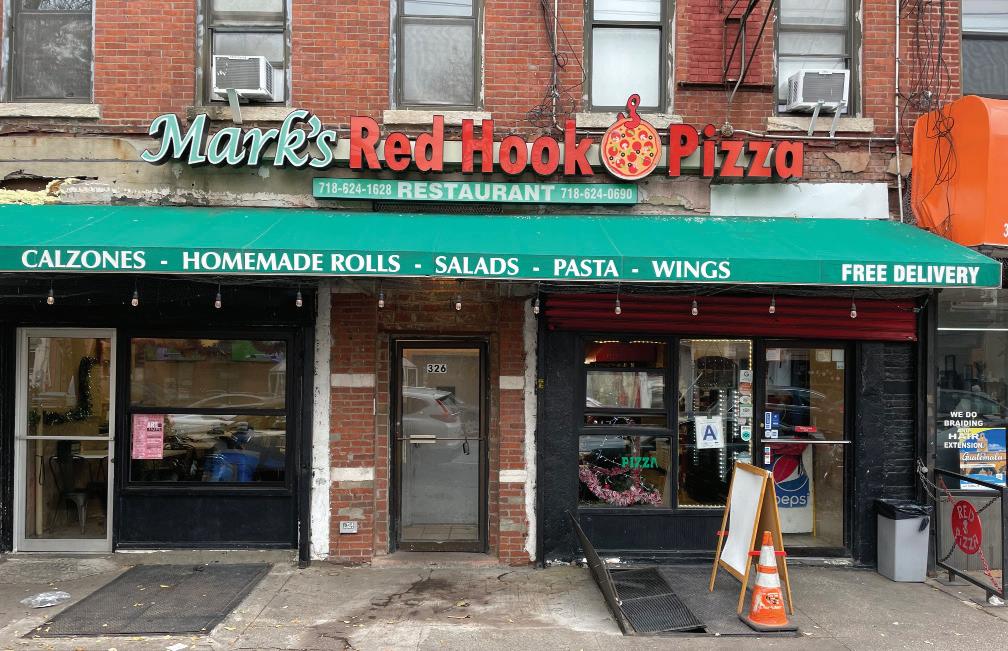

Extreme right-wing Republicans, corporate bad actors, and powerful special interests are undermining our democracy and standing in the way of progress. My job is to stop them, to uplift the most vulnerable New Yorkers, and to level the playing field.
A broken political system and predatory special interests have created a cycle of income inequality that makes it impossible for too many New Yorkers to live a life of dignity, raise a family, and pursue the American dream. That’s why a central focus of mine will be to make affordable housing more accessible and available because housing is the first step to lifting up vulnerable members of our communities.
But we must also focus on our future, especially the existential threats of climate change and environmental injustice. That’s why I will be laser focused on new technologies to protect our environment and fighting for environmental justice to ensure a livable and equitable planet for future generations.

In order to accomplish these goals, I will need your help and input. Unlike most members of Congress, I have chosen to allocate the majority of my staff and budget to the district to make sure we are ever-present on the ground. I am incredibly excited about the staff we have assembled, and I know you will be too.
If I have not met you yet, I hope to do so soon. Your voice matters to me, and I cannot wait to engage with you on the critical issues we must face together. Please reach out to me at Dan@DanGoldmanForNY.com
Happy New Year, NY-10. Let’s get to work!

Editors Note: Star-Revue publisher George Fiala has been an at-large member of this group, the CAG, since 2012.
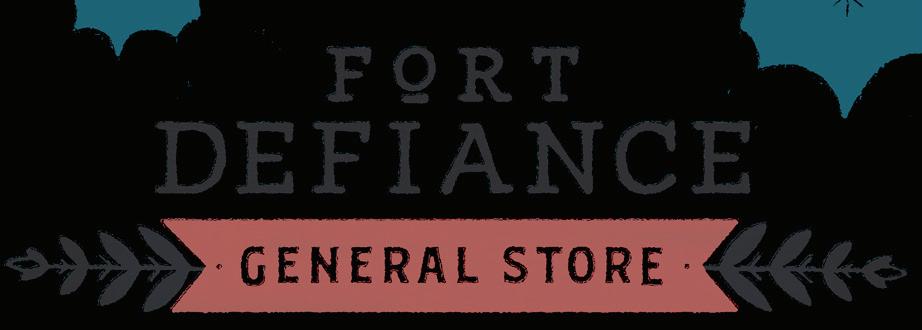
If it was just about cleaning the canal, there would be no problems. But even before the Gowanus Canal was declared a Superfund, back in 2010, there was conflict between the real estate community, Gowanus residents and the local politicians that look after both of those interests.
There is still a large vacant lot in Carroll Gardens near Smith and 9th Streets. Until the 1960's, that land, known as Public Place, was used by the Brooklyn Union Gas Company as a place to convert oil into gas, known as an MGP facility. Heavy industry surrounded the parcel from the 19th into the 20th century. It is still vacant because of the incredible pollution left behind.
By the turn of this century, efforts were underway to clean up the land, preparing it for modern use. The land is city owned and at one time it was promised to the community as a park. That idea morphed into a plan that would combine parks with residences and was called Gowanus Green.
You can glean multiple facts from the cover of the 392 page RFP submitted to the City in 2007 (next column). First is the portrayal of parkland in the foreground and buildings in the back, which is how all real estate developers package proposals that require community buy-in. Next of course, the date, which pre-dates the Superfund designation of the body of water next to the boardwalk in the picture. Third is the three letter word, FAC, which refers to the Fifth Avenue Committee, a non profit that began in Park Slope in 1978 with an initial goal of creating affordable housing on large tracts of unwanted and vacant Park Slope land. From 1993-2003, a young Brad Land-

er was its Executive Director. He was succeeded by Michelle de la Uz, who remains. She and the FAC was the prime mover of the above RFC.
During the first decade of this century, the local City Council member was Bill de Blasio. When he became mayor, was succeeded by Lander, and de la Uz was appointed to the City Planning Commission by de Blasio.
On the other side of this is an organization named FROGG, which stands for Friends and Residents of Greater Gowanus. One of it's founders was the late Linda Mariano, who purchased and restored a Gowanus brownstone in the 1970's.
She became interested in preservation when a local building, The Mill, was sold and converted to condos.
She was one of those who worked to have the Gowanus Canal named a superfund site.
The Superfund designation in 2010 is what scuttled the original plans for Gowanus Green. But these fights never die. Both FROGG and FAC made sure they were represented on the Superfund community advisory group,
and up until now have maintained a frosty, yet somewhat cooperative relationship. Until now.
Alongside the cleanup was a rezoning of Gowanus, spearheaded by Brad Lander, which as part of it revived Gowanus Green, of which FAC remains a partner.
In the fall of 2021, the Chief Engineer of the Superfund project, who reports to the CAG on a regular basis, indicated that, speaking as a scientist, he wasn't sure that building on Public Place was such a good idea.

This was an idea immediately shut down by the city and the EPA, and Tsiamis mysteriously was not at the next monthly meeting.
The FROGG contingent of the CAG began asking that EPA add Public Place to the Superfund. The following spring FROGG, along with a newer non-profit, Voice of Gowanus, (VOG) filed suit against the city, alleging that environmental law was not followed in the rezoning.
Everyone at the CAG meetings, which by now were held only on Zoom, knew that a majority were connected to the lawsuit. They also knew that a minority of CAG members were very much for the rezoning, due to benefits from the rezoning, either as developer or recipient of things such as low-priced community office space.
It now turns out that last March, about a month after the VOG lawsuit was filed, a letter was sent to the Regional Administrator of the local EPA by four of the CAG members on the pro-rezoning side, including Michelle de la Uz, Andrea Parker of the Gowanus Canal Conservancy (a recipient of community space), and Eric McClure, member and now Chairperson of Community Board 6, which approved
The letter, mailed without the knowledge of most of the other CAG members, but copied to all the local elected officials and the three EPA staffers who have been with the Gowanus Superfund since its inception, stated the following:
"Those of us who want to return to focusing on what’s going on between the banks of the Gowanus Canal are now a small minority, and despite the CAG’s overly complicated charter, there’s no mechanism for removing members who are abusive to others or who repeatedly violate CAG rules or stray outside its mission."

It goes on to recommend training in "Diversity, Equity, Inclusion, and Justice for all members." It asks that the EPA enforce "no bullying, no harassment, no rudeness, no racism, no sexism, and no sustained disruption of discussion. It demands a diverse, equitable and representative CAG, and also to ensure that any meeting involving any EPA employees focus exclusively on Superfund issues.
At the end of the letter, they collectively threaten to resign from the CAG.
Members were shocked to discover that an internal group of CAG members would complain to the EPA bosses behind their back. The letter, which was only recently leaked, was sent on a blank letterhead, although in the style of of the many letters that the whole CAG has approved and sent to EPA, cc:d to politicos, over the years.
As mentioned above, I myself have been an at-large member of the CAG for many years. While I am completely not surprised at the frustration of de la Uz and others over the VOG lawsuit, I am surprised that not one politician, or EPA insider, let the local media, of which I am one, know about the letter.
CAG meetings are open to the general public, and since they are now exclusively online, recordings are made available on the CAG website. The next meeting, scheduled for January 24, should be a doozy.
Some of the CAG doings, and the recordings, are found on their website...
If you Google “rock clubs, Brooklyn,” you’ll see more than a dozen, most of them in Williamsburg, Bushwick, Gowanus or nearby. But before any of them were there, Lauterbach’s, at 335 Prospect Ave. in the South Slope, had a thriving scene featuring original rock bands.

None of the Lauterbach’s bands – Frank’s Museum, Chemical Wedding, Cryptic Soup, Formaldehyde Blues Train, the Squirrels from Hell, Beatniks from Mars, the Original Rays and a host of others – became household names. But they set off an explosion of creativity and developed a following that survives today.

In the 1980s, Brooklyn wasn’t trendy. There were few rock clubs there other than L’Amour at 1546 62nd St., which was best known for hard rock and heavy metal. That changed around 1988, when Bob Racioppo, a former member of the new wave/ CBGB’s band the Shirts, walked into Lauterbach’s, a neighborhood bar. Racioppo was driving a cab and had a new band, Chemical Wedding. He noticed that the bar, owned by the Lauterbach family who lived upstairs, had a stage and looked like a good place for rock bands to play. “It looked like a mini-CBGB’s,” he recalls. “It had a pool table, and the original CBGB’s also had a pool table.” The South Slope in those days, he says, was “white and Puerto Rican working class,” not yet gentrified.


Racioppo, who came from Sunset Park, asked the owners, George and Alice Lauterbach, whether he could present music, and they agreed. He also started bartending there. “I brought in money,” he says. “I knew how to treat bands because I (as a music veteran) knew how bands like to be treated.” The
club soon began to attract fans beyond the immediate area.

Bands mainly came to Lauterbach’s by word of mouth. Most were from Brooklyn, but not all. For example, Will Duggan, bass player of the Squirrels from Hell, came from Long Island, while other members of his group hailed from other parts of the metro area.


“We were in the recording studio, and one of the bands we knew told us about the scene at Lauterbach’s. We met Bob [Racioppo] and we became friends,” Duggan says. In fact, he adds, all the bands became friendly with each other — something that didn’t happen as much in the high-pressure, competitive world of Manhattan clubs.
Lauterbach’s put out a series of compilation albums featuring groups who played there. The first, “Today Brooklyn, Tomorrow the World,” came out on vinyl in 1988 and contained 10 songs. This writer bought the second album, “Beat This,” in 1990, on cassette (it also came out on CD). It features 20 songs by 20 artists in a wide variety of styles, from thrashing punk to neo-reggae to soft, introspective art-rock.
Mick Cantarella recorded many of the Lauterbach’s groups at his Grampa Studio on Warren Street in Boerum Hill. From there, “I could ride my bike back and forth to Lauterbach’s in my leather jacket,” he remembers. Here are his memories of some of the groups:
Chemical Wedding – “Bob Racioppo (5 string guitar) was formerly the bass player in the Shirts, and had enjoyed more success than anyone else there, so he was kind of looked upon as kind of the leader of this whole thing, and with great respect. Oh,
also Chemical Wedding rocked. They had a fabulous singer, Jana, and Bob put together a solid band behind her.”
The Fields - ”A country band, so a little different than the rock bands there, but they had the goods, and checked off all the boxes for what a good band needs in every department. Oh, they also rocked.”
Frank’s Museum – “Frank (Ruscitti) knew how to put on a performance, had great songs, and always had a good band behind him. Oh, they also rocked. I danced many a dance to them.”
Formaldehyde Blues Train – “I’ll start with they rocked. Not all the best technical players, but somehow that worked in their favor.”
Bite The Wax Godhead – “Just about the only band that played there with a drum machine, which was not booed, that is how supportive the folks there were. BTWG was more of a pop band, and the lead singer Alec Cumming was/is influenced by the Beach Boys.”
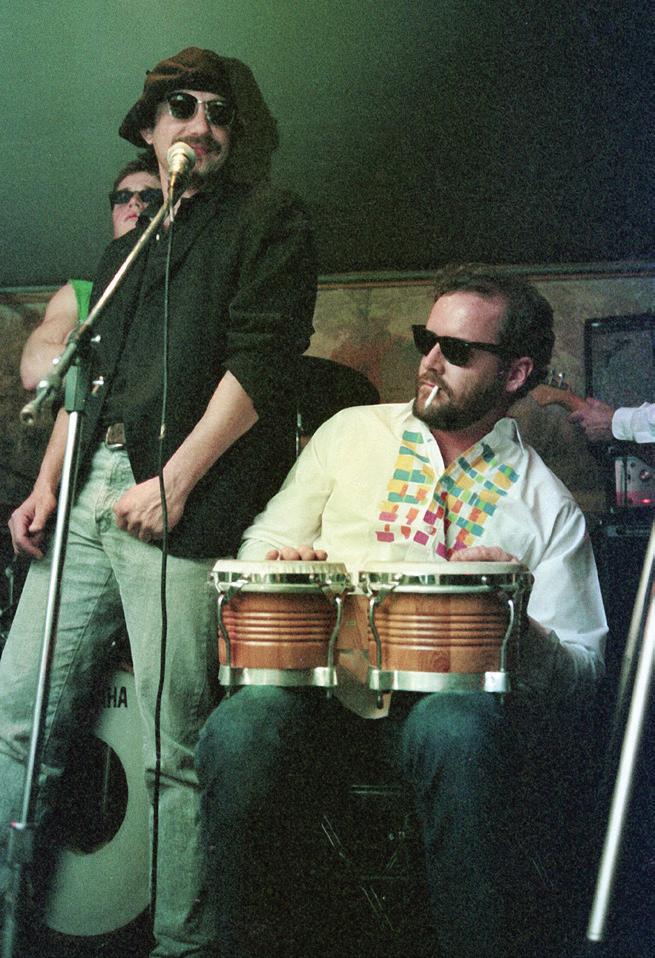
Al Lee Wyer - “A blue-collar singer-songwriter with a thick Brooklyn accent who wrote just the most amazing lyrics, and then put them to these beautiful melodies.”.
The albums were only one part of a mini-publicity machine. Lauterbach’s were listed in Time Out New York and The New Yorker, and took out paid ads in the Village Voice. Periodically, the “Brooklyn Beat” bands,
as they were known, put on group shows at CBGB’s. “At one time, at CBGB’s, we had 19 bands on stage,” says Robert Maloney, aka Robert Moe, who fronted a band known as The Moe. On other occasions, Duggan of the Squirrels from Hell, who had connections in Long Island, took some of the bands out to Scandals in Merrick.


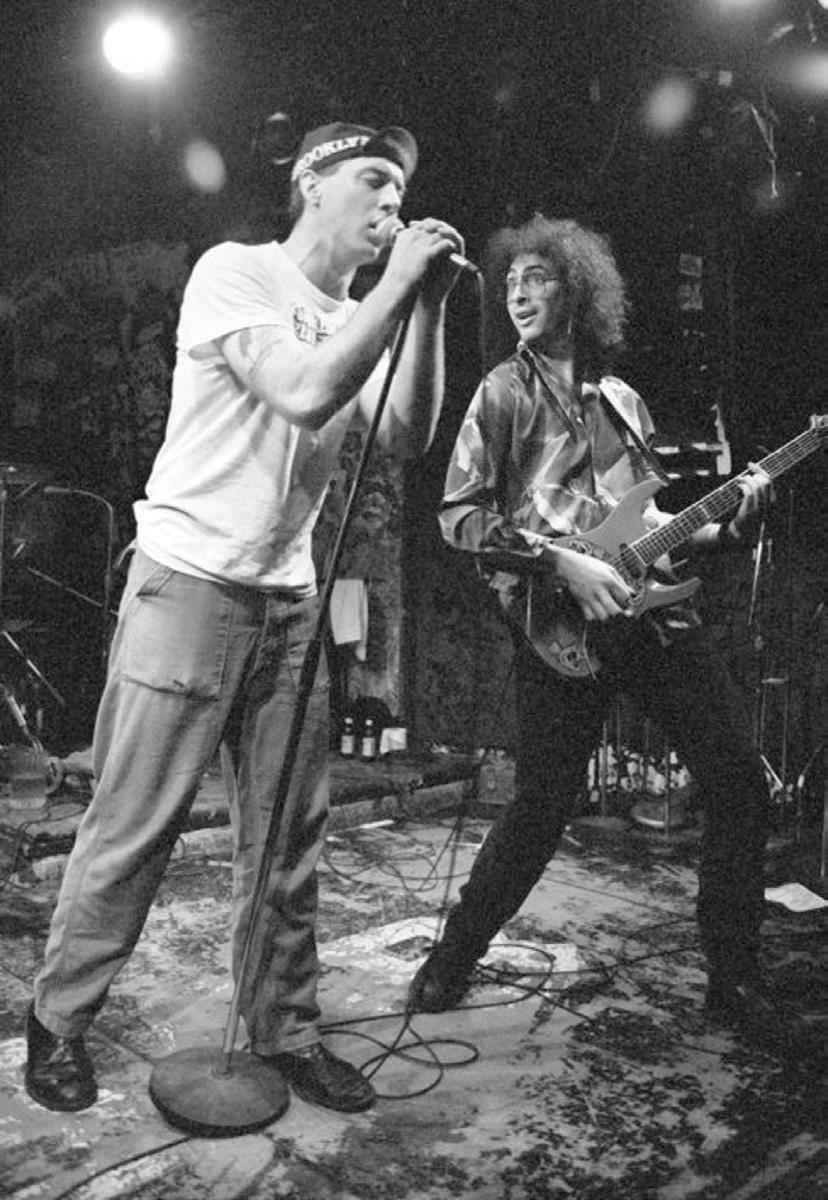
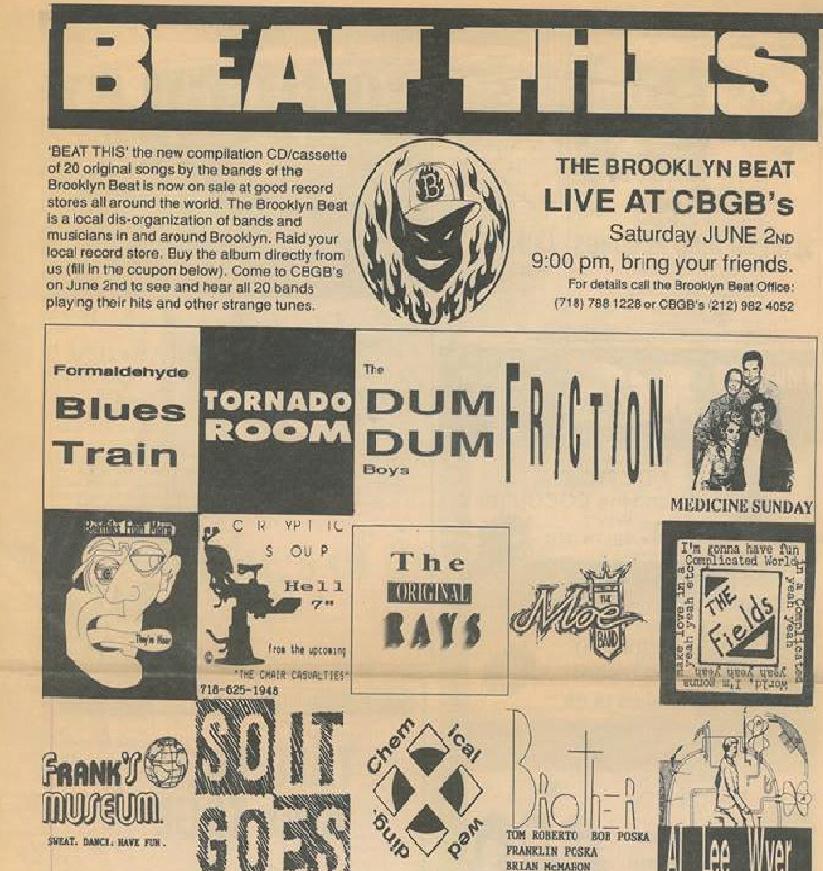


The Lauterbach’s team sent cassettes and CDs to as many as 500 college radio stations across the country, according to Moe. In the New York area, Brooklyn Beat bands got airplay on WFUV, WFMU, WNYU and elsewhere. Still, this writer doesn’t remember any of the Brooklyn Beat groups being played on WNEW-FM and K-ROCK, then the city’s two major rock stations.

Racioppo explains: “If they were to be played on big radio stations, they would have to have gotten signed [to major labels].” Brooklyn Beat bands usually recorded for small labels, or self-produced their records. Racioppo booked the bands until 1992. “I quit bartending when we were held up with a shotgun. Then, I went back to my first love, painting,” he says. Moe, who’d known Racioppo since their days at Bishop Ford High School, took over the booking.
Moe came from Windsor Terrace “near Farrell’s Bar,” and in fact, a recent video of one of The Moe’s songs, “Romance is Risky,” was partially shot inside Farrell’s. About his own band, Moe said, “I was never much into practicing, rehearsing. I was more improvisational. Sometimes I wrote songs on stage.” Moe continued to book acts until he temporarily moved to Seattle in 1996.
Most of those interviewed for this article agree that the magic went out of Lauterbach’s sometime in the
by J.R. Rost‘90s when the club was closed for about six months for renovations. “They took twice as long as they should have, and they put in a stone floor in the back room where they used to have a wooden floor,” Cantarella says. This changed the acoustics for the worse, he adds.
The Lauterbach family sold the house about 15 years ago, according to Moe, and the space once occupied by the club is now a day care center.

Some of the acts that regularly played Lauterbach’s are still playing. You can hear new music from the Squirrels from Hell on their website. Duggan says the Squirrels, which have been around since 1978, are the oldest local rock group in the metro area. Frank Ruscitti of Frank’s Museum, now a history teacher, has several new songs on YouTube, including a “Ukraine Song.” Al Lee Wyer still writes and performs satirical songs like “Color Blind at the Traffic Light,” “Blue Sky, Red State” and “A Degenerate Gambler’s Christmas.”
Looking back on Lauterbach’s, Duggan says, “It was a great scene, and the bands that played there were all very good.” Wyer pays the ultimate compliment: “We were having fun!”
Captions for photos above: P 10, clockwise from top left: unidentified accordian player; Robert "Moe" Maloney; Bob Racioppo; Christmas Party; Michael Ward and Chemical Wedding; the Brooklyn Beat at CBGB's; the MOE band; Stephen Potenzano joins Bill Ward, Chemical Wedding; Frank Ruscitti and Doc of Frank's Museum.
Page 11 - clockwise from top left: Hollis Fitch and Dave Weiss of the Formaldehyde Blues Train; the Lauterbach building in 2009; Chemical Wedding; Al Lee Wyer; Mick Cantarelli, Rossi Bright; the MOE Band including Kate; the Moe; the audience.
Iwalked into the colorful and dramatically lit club, Purgatory in Brooklyn. Everything about the space screamed Bushwick—offbeat aesthetic, yet not lacking any cool whatsoever. Daytona Starsky was performing tonight for an arriving crowd. I had the pleasure of speaking with both him and his management. More on his album, Reality Station, and live performance below.
Reality Station begins with distorted sounds that wobble and pan like a train approaching on the intro “En trance,” before moving into the funk sounds of “Mr. Action”
With all the production around Daytona’s voice, his punchy, clear vocals still shine through as the main act, soto-speak, striking a delicate balance between style and talent.
Daytona Starsky’s voice sounds as if he is comfortable also singing other genres as well, or may have begun his career doing so—-in some ways reminiscent of multi-talented acts like Lenny Kravitz, Pink, or Pharell. Overall, Reality Station is a consis-

showing up by 1980, according to Catapano. Additionally, in 1953, about 20-percent of all exports and imports came through Red Hook, Brooklyn and Chelsea, New York. By the 1970s, only about 8.4-percent of all exports and imports were coming through New York due to transformations in the global economy and trade. New York docks—particularly in Red Hook, Brooklyn—currently handle a sliver of the New York Harbor and port trade compared to New Jersey’s estimated 80 to 90 percent.
Just as it was 70 years ago, the Waterfront Commission remains structured with one commissioner from New York and one commissioner from New Jersey. It is set up differently from other interstate agreements including the Port Authority of New York and New Jersey, which was created in 1921.
“There’s this whole sort of structure to deal with political conflicts, [how] to avoid them, and [how to] reach com-

tent mixture of mainly pop-rock, soul and funk, with moments of rnb vocals from Daytona, with my personal favorite track from the album being “Movie Star.”
From his album cover, music production to his live performance, Daytona Starky’s image is very polished. After speaking with his manager Rich Morales, it became clear that Starky’s apparent ‘readiness’ isn’t a coincidence.
My conversation with Rich and Daytona below.
(Rich walks over to the bar to meet me)
Rich Morales (Manager): Thank you for coming out to the show
Roderick Thomas: It’s my pleasure
RT: I’m excited to see the show. Why this venue though?
Rich Morales (Manager): We wanted to do something intimate, and something that fit the feeling of the music.
(Daytona Starsky approaches the bar after his sound check)
RT: Hi Daytona, you’re definitely very talented, and the album is well produced, how did it come about?
promises, and that doesn’t exist right now at the Waterfront Commission,” said Ry Rivard, a reporter who covers energy, the environment, and transportation in New Jersey for POLITICO, during the webinar. “So, there has been tension over the past couple of decades about whether the Waterfront Commission should still exist in its current form or whether it should exist at all.”
Given that shipping activity is largely in its state, New Jersey has tried to leave the Waterfront Commission since 2018, when then-Governor Chris Christie signed a bill (which he previously vetoed in 2015) on his last day of office. Upon assuming the position, current Governor Phil Murphy— who previously promised members of the International Longshoremen’s Association that he would, as he declared in his campaign speech before the 2017 election, “figure out the damn Waterfront Commission once and for all”—was faced with a lawsuit on his first day of office. The Waterfront Commission sued to save itself and, after years tied up in court, the case was turned away in 2021 on issues of standing.
Soon after, New Jersey went back to
Daytona: We spent five years time working on the music, and honing in on the right feeling. This wasn’t an overnight process. The pandemic was an opportunity for me to be creative and make something meaningful.
RT: Artist development isn’t as common these days, but it’s clear you and Daytona have worked on the music and presentation of the art.
Rich Morales (Manager): Yes, we took our time. The music was an evolution. We could have put out music earlier, but it wouldn’t have been what it is today.
RT: How important is live performance to you?
Daytona: The studio is one thing. But a live show is an opportunity to let the music be heard in a different way. (Daytona walks upstairs to prepare for the show)
I walked upstairs to the see Daytona perform. The opening act was cosing and the crowd was steadily growing in numbers. Daytona and his band stepped on stage, and shortly after a brief mic check, the music began. Immediately, I was impressed by Dayto-
the drawing board to determine how it could pull out of the compact, primarily looking to shift policing of the port and background checks to the state police, which already reportedly plays a similar role in the state’s waste management and casino industries. New York then entered the conversation, arguing that workers move back and forth between the two states’ ports and that it makes sense to keep the current compact intact. The U.S. Solicitor General, as well some states including Texas, have since sided with New Jersey. Some academics and other states have expressed concern in their submitted amicus curiae briefs over whether a Supreme Court ruling could affect other interstate compacts.
The Supreme Court docket has recorded the arguments being filed by both the defendant and plaintiff since March 2022. In layman’s terms, New Jersey argues that the Waterfront Commission hinders harbor business and causes labor shortages with a lengthy hiring process. It also argues that the industry today is not what it was in the 1950s and that this particular type of regulator (the compact) is not warranted. New York—and the
na’s stage presence, something he had clearly practiced. Notably, he sounded just as good as the recorded versions of his songs, perhaps more boisterous and aggressive too.
Daytona starsky performed what must have been a nearly hour-long set to an attentive and engaged crowd. Everyone, including myself, fixated on him and his band, as we listened to the music emanating from the stage and vibrating off the walls in the packed space. His live performance gave a new perspective to his album, and demonstrated that he has star power—-the coveted “it factor.”
Reality Station is a well crafted, cohesive body of work that possibly marks the beginning of a very long and successful career for Daytona. Check out Reality Station by Daytona Starsky on streaming platforms.
Roderick Thomas is an NYC based writer, filmmaker, and Host of Hippie By Accident Podcast.
(Instagram: @Hippiebyaccident, Email: rtroderick.thomas@gmail. com, Site: roderickthomas.net)
Waterfront Commission itself—believes that, without the compact, the industry could go backwards to what it once was.
“The Supreme Court is not trying to get into the goods or bads of the commission, but really the simple legal question … of whether New Jersey can unilaterally leave this bi-state compact,” said Rivard. “New Jersey obviously thinks it can, New York obviously doesn’t think it should be able to. We just don’t know what the court is going to do.”

 by Dario Pio Muccilli, from the Star-Revue foreign desk
by Dario Pio Muccilli, from the Star-Revue foreign desk
You would barely know it from the US media, but the European Union is currently in the midst of it’s worst-ever scandal. It all has to do with reports that we did see about the exploitation of foreign migrant workers who built the sports complex that housed the recent World Cup in Qatar.
As Belgian newspaper Le Soir revealed last December 9th former MEP (member of the European Parliament) Antonio Panzeri, the vice-president of the EU Parliament Eva Kaili, her husband and Panzeri’s assistant Francesco Giorgi were in the middle of a major corruption scheme right inside EU institutions, involving many other MEPs from Italy and Belgium and even the head of International Trade Union Confederation Luca Visenrini.
Countries such as Qatar and Morocco sought to influence EU policy by providing legislators and staff with expensive holidays and other gifts, according to legal documents seen by the Financial Times. A series of police
raids in early December recovered €1.5 million in cash.
The countries who financed Panzeri and the others were Qatar and Morocco, the first willing to cleanse its image on human rights violations before the FIFA World Cup, the second for some benefits on visa restrictions, fishing areas and for the recognition of the disputed sovereignty over the Saharawi region.
The corruption scheme, which according to Belgium prosecutors was managed by Panzeri, allowed bribes coming from the aforementioned countries to go directly inside many MEPs’ pockets. Right now all these have been spotted inside the Socialist and Democratic Party (SDP), but few MEPs from the other major party in the EU Parliament, the center-right European People’s Party (EPP), have used this as a tool to delegitimize their colleagues.
According to rumors, Manfred Weber, EPP’s group leader, told his MEPs to stay quiet due to possible new evi-
dence showing the EPP was involved. They don’t want it to backfire. They might be right about it, because the Belgian prosecutors have not issued a lot of statements, and they seem pretty cautious about communicating too much to the media.
Right now the investigation seems limited to Panzeri’s inner circles, but voices go up and down and everywhere newspapers are already reporting alleged new corrupted MEPs, who everytime deny, threatening to denounce editors for defamation.
Someone has already called it the “Italian Job” due to the large number of Italians involved and to the neverending stigma of a corrupted people. But Italian PM Meloni, who is also the leader of the far-right European Conservatives and Reformists Party (ECR), replied harshly, “It’s rather the Socialist and Democratic job, as there are SDP’s MEPs from much more than one nationality involved.”

Indeed even though right now the
noise is not so high around the SDP, the national parties that are part of this European alliance are obviously aware of how bad it could end. The Italian Democratic Party, a member of the SDP, called an urgent meeting of its leadership as soon as the scandal broke out, deciding to suspend Panzeri and the other MEPs involved from party membership.
This scandal could be a huge stigma on the European center-left, as no right-wing politician has been identified among the corrupts. But being on average the center-left the most supportive of EU and European integration this scandal could and probably will strengthen the anti-EU grip on the general public, the same one that led to Brexit. The EU could be about to lose every single point of reputation gained during the Covid with its recovery strategy and that could probably cause, if not the ending, a big delay in European integration towards that dream of many European politicians of the United States of Europe.


 by Katherine Rivard
by Katherine Rivard
Just a block from my apartment is a little bakery, almost hidden amongst the surrounding houses, a block from the BQE. Though I’d occasionally seen lines wrapping around the block, I was hesitant to give it a try, as a visit to their website revealed a price tag of $11 per loaf. Two weeks ago, I decided to splurge and see what was worth the wait. One bite and I was converted. I’m now convinced that ACQ Bread Co. is one of Carroll Gardens’ best-kept secrets.
Inspired and hoping to learn more about the bakery for this article, I popped into the small shop again last week. Behind the counter were Tyler Lee Steinbrenner, owner and baker at ACQ Bread Co., and his coworker, Nico Coppelman. After explaining that I was trying to write about ACQ, they welcomed me into the bakery with kind, bashful smiles. That’s the first thing to note about this bakery— the kindness and thoughtfulness of both Steinbrenner and Coppelman come through in both their interactions with customers and their menu. Before opening ACQ, Steinbrenner worked at Michelin-starred restaurants as a “bread designer”. Furloughed at the start of the pandemic, and amidst the protests that followed the murder of George Floyd, he began making bread and donating it to
activists and essential workers. From this noble cause, Anti-Conquest, AKA ACQ, Bread Co. was born.
At first it was a one-man show. He found a former catering space at 543 Clinton Street, scrubbed the place from top to bottom, and started baking the next week. At the time, he was using cast iron pans left behind by the previous occupants. “I probably made between 15-20,000 cast iron sourdoughs,” he estimated. He also did all the mixing by hand and delivered the loaves on his cargo bike.
These days he has upgraded to a commercial mixer and customers come to him to pick up their bread. Coppelman helps him run the bakery, and a new staff member (Ellis) will soon support the front of house. While the bread was previously only available via advance orders, you can now stop by three days a week (Thursday, Friday, and Saturday) between 4pm and 7pm, find them at the Carroll Gardens Farmer’s Market each Sunday starting at 8am, or join their CSA to guarantee a weekly loaf (or two).
Speaking with Steinbrenner, you sense an interesting mix of workaholic, perfectionist, activist, and artist. In fact, before becoming a bread guy, he was a painter. “It may sound corny, but bread is sculpture, and the ov-
ens are kilns.” The result of his artistry—phenomenal bread. And others agree: ACQ currently has 59 Google reviews, 56 of which gave the bread five stars, the highest ranking. The menu of bread is meant to be as nutritious as possible, while still being inventive (and certainly tasty). For example, Mountain Bread is a newer addition to the menu, the product of Steinbrenner’s most recent camping trip. Searching for a heartier loaf that he could pair with some cheese and salami, the loaf is 35% rye accented with locally sourced soy sauce and local, woodfired maple syrup. The Living Bread is perhaps the most healthy option— a seedy, glutinous sandwich loaf that Steinbrenner describes as his take on an ‘80s health bread. ACQ also bakes fantastic sourdough loaves (in either a boule or Pullman loaf – ideal for sandwiches), milk bread, and fermented rye chocolate chip cookies (only $4). In case you’re interested in zhuzhing up your toast further, the bakery re-
When I was a senior at Manhattan College, I gave my twin sister Regina away to Charlie, right before he shipped off to APO addresses in Vietnam. I never saw him again. The marriage took place in St. Thomas Episcopal Church on Bushwick Avenue. My parents refused to attend because their priest said Charlie’s priest wasn’t a true priest. But their refusal wasn’t really based on clerical righteousness. It was all about King Henry VIII creating the Episcopal Church in 1534. After all, Irish Catholic immigrants were never keen on the Protestant Royals.
Months later “The Troubles” erupted in Northern Ireland, dragging over 3,000 Irish to their graves in tribal battles revolving around nationalism, ancestry and of course, religion. Kenneth Branagh, a Protestant child then, recently dramatized the onset of the violence he witnessed in his marvelous movie, Belfast. In an empty theater depopulated by the Omicron surge, I sobbed as the closing shots scrolled: “For the ones who stayed. For the ones who left. And for all the ones who were lost.” (As I walked out, I imagined Branagh quoting Steely Dan to the many critics who pronounced his film too soft: “I cried when I wrote this song, sue me if I play too long. This brother is free, I’ll be what I want to be.”)

Three years after the Good Friday peace accord halted that madness, nineteen zombies—following months of whoring and drinking their way across the land of the free and the brave—targeted iconic American buildings with jets, killing thousands of innocent people on a beautifully clear Tuesday morning in order to “defend” their religion. WTF!
So yeah, call me crazy but bodies blowing up bodies to champion reli-
being stupid. Because, face it, if there is no Hereafter, believing in it has no downside. Hell, you’ll be too dead to be disappointed by the time you find out. As Pascal put it in the first recorded example of probability theory: “If you gain, you gain all; if you lose, you lose nothing. Wager, then, without hesitation that the Hereafter is.” (Pascal wrote “God,” I wrote “Hereafter,” but it’s the same difference.)
And now, as a value-added extra for Star-Revue readers, and to foster Inter-Faith acceptance and tolerance, I will explain the six Holy Days of Obligation promulgated by the Roman Catholic Church in America which requires that on these dates the faithful must attend mass, avoid unnecessary work and in return, reap the blessings of alternate side of the street parking cancellations:
January 1. This used to be called “The Feast of the Circumcision of Jesus” when I was a kid attending St. Jerome’s on Nostrand Avenue. I was not alone in thinking “Circumcision” was a synonym for “New Year’s Day.” But a few decades ago the Pope changed it to “The Solemnity of Mary,” maybe to throttle back on penile-related sermons by the clergy. Anyway, my son Jamie was not circumcised when he was born in Jackson Memorial down in Miami, the largest hospital in the country, possibly because of a scalpel shortage. So based on neighbor recommendations, we hired a Mohel who performed the procedure on our dining room table. In the absence of any Circumcision songs, I played a collection of soft mellow tunes by an Irish chanteuse. After packing up his tools, the Rabbi said he enjoyed the soundtrack. I handed him the CD. Thus was another Enya fan born. (She’s second only to U2 in Irish record sales.)
40 Days After Easter (The Ascension). This one features images of Jesus rising off the ground into the sky. But his arms are by his side, not pointing upward like Superman. Odd.

December 8 (The Immaculate Conception). Would it be too sacrilegious to say we called this one Pearl Harbor Day Plus 1? So many World War II movies to watch on TV back then. But as we became fully-fledged adults with WWII memories receding all around us, we began to associate this Holy Day with the Immaculate Reception by the great Pittsburgh Steeler Franco Harris on December 23, 1972.

gion kind of turned me off to religion. Also, your religion saying our daughters aren’t allowed to make decisions involving their own bodies seems kind of, you know, fascist. And not in a good way. But I do believe in the survival of the spirit. Partly because I saw a ghost when I was a kid. And partly because Pascal’s Wager makes a lot of sense to me.
Pascal was a 17th century mathematician who calculated that when it came to The Hereafter, the best bet was to believe in it. Why? Well, if you don’t believe but it does exist, you might get snubbed by the heavenly Maître d’ for

August 15 (The Assumption). To this day, I have no clue what this is about. I will note however, the date is close to the surrender of Japan that ended World War II. Coincidence? Or evidence of divine intervention on behalf of our worn-out Pacific forces? I think you can guess where I stand on this one.
November 1 (All Saints’ Day). This was our favorite miracle: the day after Halloween, God gave us a day off from school so we could recuperate from the bellyaches brought on by too much chocolate.
RIP, Franco (1950-2022). December 25 (Christmas). In 2022 Christmas fell on a Sunday. It is a mortal sin to miss mass on a Sunday or on one of the six Holy Days. But if you miss mass on a Sunday that’s also a Holy Day, does that count as two mortal sins? Of interest, the Archdiocese recently ruled that if a Holy Day falls on a Saturday or Monday, we do
NOT have to attend mass on the Holy Day because we’d be worn out if we had to worship (GASP!) two days in a row. Fine, but that doesn’t answer my question...Asking for a friend, not me…I’ll wait here for an answer… Nothing? OK, drafting my ghost story for the next issue…
"As I walked out, I imagined Branagh quoting Steely Dan to the many critics who pronounced his film too soft:
“I cried when I wrote this song, sue me if I play too long."Franco Harris
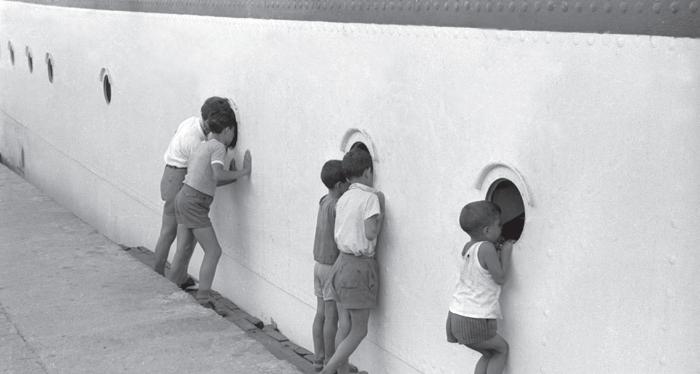
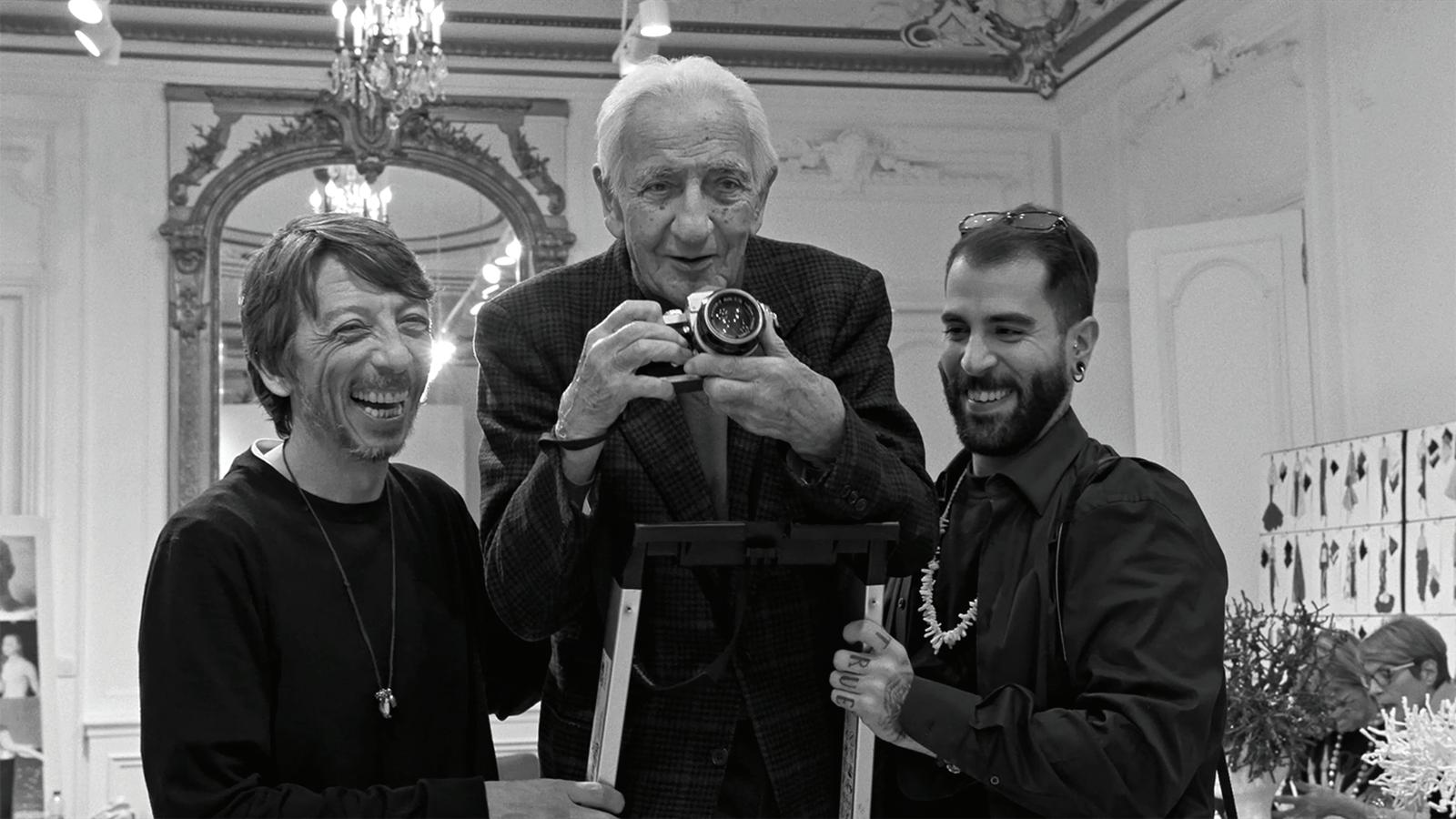
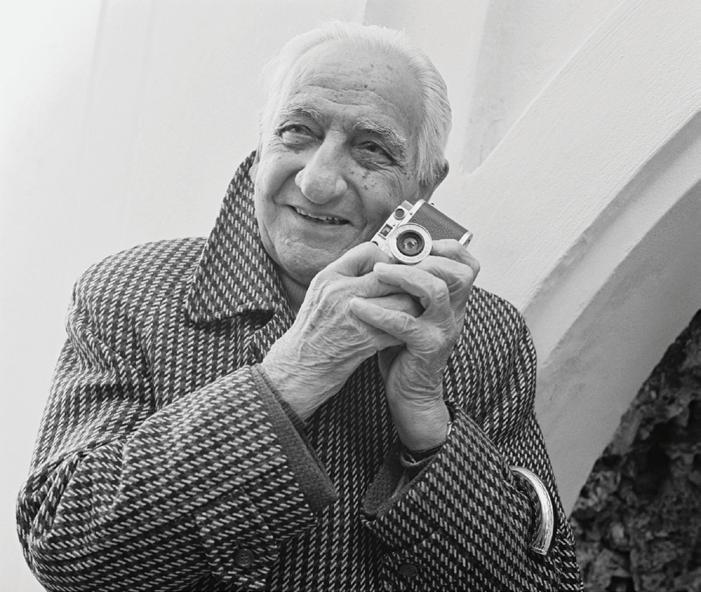 by Dante A. Ciampaglia
by Dante A. Ciampaglia
What compels a master of his craft — at the height of his powers — to walk away, to say “finito”? That question haunts Bruce Weber’s documentary The Treasure of His Youth: The Photographs of Paolo Di Paolo, and it’s one the filmmaker spends 105 minutes not answering.

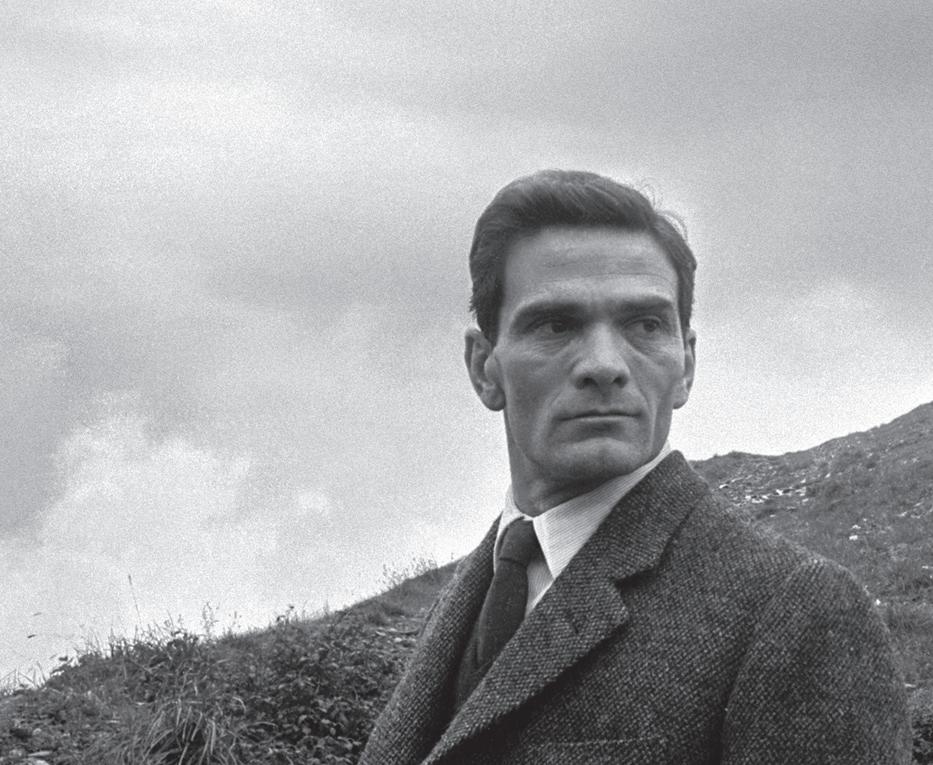
It’s easy to be taken in by the film because it’s so gorgeous. Di Paolo spent 15 years shooting strikingly beautiful and achingly empathetic neorealist images of postwar Italy and the dolce vita film scene of the 1950s and ‘60s. His photos of rural communities and urban destitution are documentaries unto themselves, testifying that the people in his frame were here, that they existed. Likewise, shots of stars like Marcello Mastroianni and Anna Magnani and directors like Pier Paolo Pasolini are more vivacious and humane than candid behind-the-scenes snaps. They’re evidence of the mutual trust and intimacy between photographer and subject, the former granted entry not into their trailers or dressing rooms but their homes and interior selves.
One image in particular, of Mastroianni sitting alone in a smoky, shadowy cafe, is breathtaking, shattering the celebrity myth and while confronting the postwar existentialism that gripped everyone from cinema megastars to anonymous farmers.
After living under Mussolini’s suffocating Fascist regime, where “we couldn’t see anything beyond this cloud,” as Di Paolo describes it, the fall of the regime sent the then-18-year-old striver, like others of his generation, to see what existed beyond the limits of Larino, his hometown in the south of Italy. “We went everywhere with our imaginations,” he says, and it shows in his images, which were published in illustrated magazines Il Mondo and Tempo Illustrato. But when the publica-
tions shifted in the mid-’60s with the rise of television, they deemphasized photography — or at least the kind he practiced; they started looking for more gossipy paparazzi-style material — and Di Paolo chose to retire. He was barely 40, but, he says, “I preferred stopping rather than observing my own demise.”
That’s an easy explanation, and one that makes some kind of surface sense. But Di Paolo didn’t just retire. He stopped taking photos. He boxed up and sent to the basement his negatives, prints, and camera. He never discussed his career as a photographer, with his daughter or anyone else. He fashioned himself into a local historian of the carabinieri His legacy, lying dormant, was forgotten. It was only after crossing paths at a flea market and making friends with a photo dealer decades later that he began opening up about his previous life.
That dealer is how Weber found Di Paolo, serendipitously discovering his photographs at the dealer’s shop while strolling through Rome “a couple years ago.” He was instantly smitten — “It was like falling into a forgotten world,” Weber says — and it’s easy to see why.
And thus we have The Treasure of His Youth, tracking Di Paolo’s journey, which includes a long-overdue retrospective, his first, in 2019 and, miraculously, a commission to shoot a Valentino couture show in 2020. (Designer Pierpaolo Piccioli created a collection inspired by a fashion image taken by Di Paolo in the ‘60s.) We spend a lot of time with Di Paolo and his daughter, the caretaker of his legacy and a driving force behind the film, and being in his presence is warm and uncanny. He tells great stories — the one about being cured of a childhood illness with regular red-wine baths is incredible — and he practices the elegant precision of a worldly nonagenarian who’s constantly bemused by his second brush with
fame. But he’s also undeniably Italian of the kind familiar to so many Italian Americans. Looking at Di Paolo in his younger days, it’s impossible not to see flecks of my grandfather, father, uncle, myself. (My family is from Pizzoferrato, close enough to Larino that the similarities feel more than coincidental.) It makes the experience of being with Di Paolo and hearing his memories so powerful — more than even the images.
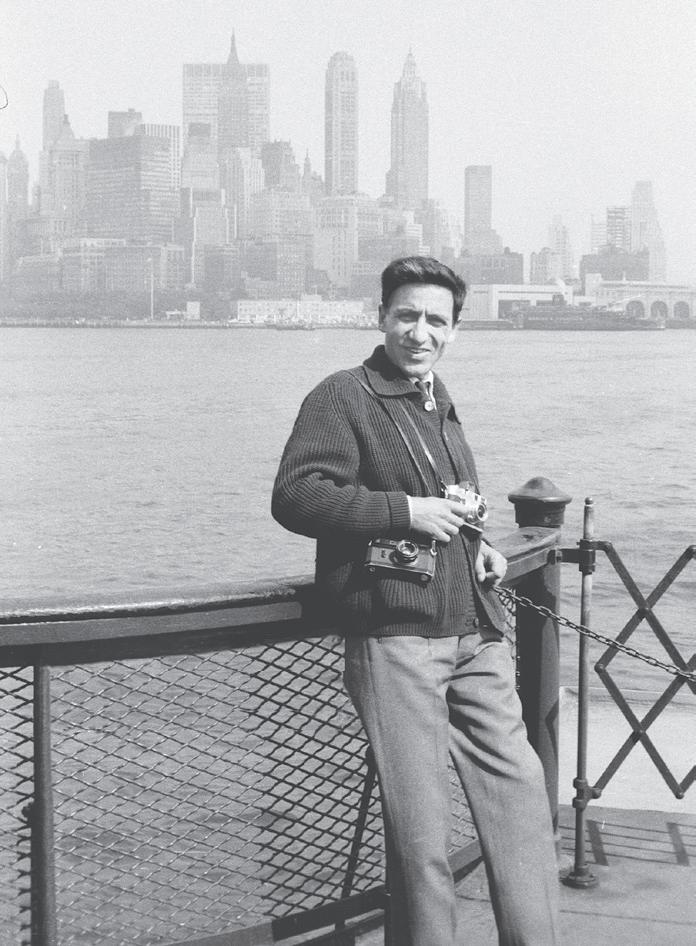
It’s also why The Treasure of His Youth is so frustrating. For some reason, Weber lays down a parallel story of his infatuation with and love of Italy, which is neither interesting nor all that relevant. He tries to be cute in the construction of the film, presenting everything in black-and-white except for interstitial footage shot to look like it’s on 8mm film and then manipulated to be washed out and seemingly jumping out of the projector gate. (It’s all digital.) He drops in a montage, about halfway through as a kind of intermission, of scenes from Italian movies of the ‘50s and ’60s set to the Barry White track “Volare” — an embarrassing, inexplicable diversion that makes clear he’d rather be making a movie about la dolce vita cinema.

Worst of all, Weber is incurious. After the majestic coda of the Valentino show, Weber can’t let Di Paolo and his family have the last word. With only a couple minutes left in the film, he pops in with his languid, monotonous voiceover asking what everyone watching the film has been wondering: Artists lose confidence, but they rarely just quit. So why did Paolo Di Paolo? Great question! It’s really too bad he couldn’t find time over the course of this enterprise to tug at that thread. Though, maybe he can’t — or, at least, not anymore. Weber, a photographer, dips into documentaries from time to
time, and his 1988 Chet Baker film, Let’s Get Lost, has a fairly good reputation. So what went wrong here? He doesn’t speak Italian, relying instead on a friend to be his translator, so it could be that this lingual gap swallowed introspection and investigation. We see one moment of his translator friend getting deep with Di Paolo about a photograph, in Italian, so if we’re giving Weber the benefit of the doubt, there’s evidence that he was just in over his head. A less generous reading is that it’s a self-centered film about one man’s love of Italy and Italian cinema with a short-film celebration of this exquisite photographer peppered throughout. In either case, that The Treasure of His Youth isn’t structured around getting at an answer to the core mystery of Di Paolo’s art is insurmountable. Yes, the images are gorgeous. It was love at first sight for me, too, just seeing the film advertised by Film Forum, where it screened in December. (It’s currently not streaming anywhere, but that may change in the months ahead.) But there is a story here, one that’s nodded at as we pass it by. Di Paolo’s experiences, memories, and photographs are wonderful — and important to telling that story fully. But without a true interrogation of why he quit at the center, everything shoots off in a million directions, tearing the veneer off the documentary to reveal little beneath the photography.
But, oh, what photography! In that, I suppose, Weber deserves credit. He’s bringing Paolo Di Paolo’s images and career to wider attention — particularly in the U.S., and more than likely in Italy, too — and the photographer and his work make the film worth the time. It’s just too bad someone like Weber, who knows the value of making every shot count, wastes this one.
2-Tone in 2023. In December, the voice of the British ska revival was silenced. The wave began with the Specials in 1979, brilliantly conceived not as a band so much as a movement by Jerry Dammers, whose ouster not long after led to the splintering and eventual demise of the greatest of the 2-Tone bands. Dammers was the mastermind and architect, but Terry Hall, who died Dec. 18 at the age of 63, was the voice and face of the band. Where the punks were fueled by anger and delusions of revolution, the new ska bands played clean, infectious, upbeat Jamaican grooves while lamenting the violence around them, and the despondent and listless Hall personified the sentiment. Hall’s career didn’t end with the Specials, though. He formed the lighter but eternally endearing Fun Boy Three with fellow Specials Lynval Golding and Neville Staples for another couple albums before disbanding. A variety of projects followed, including a much-overlooked collaboration with Fun-Da-Mental’s Mushtaq. Their 2003 album The Hour of Two Lights is easily Hall’s strongest post-FB3 album. The vantage switches from Caribbean to Arabic, but the perspective remains the same: sullenly surviving in a cold, cold world. The album was released on Honest Jon’s records (founded by Damon Albarn of Blur and Gorillaz, who also appears on the recording), and is streaming in full on the label’s Bandcamp site.

The 2-Tone movement was avowedly anti-racist and a multiracial lineup was a central tenet to what was nevertheless a male-dominated scene. The Specials, the (English) Beat, Bad Manners and Madness were all boy bands. The Selecter, with lead singer Pauline Black, stood out as the only group breaking the gender divide until Dammers’ second Specials lineup put Bodysnatchers singer Rhoda Dakar up front. The Selecter were officially the
second 2nd-wave ska band, occupying the flipside of the first single released by Dammers’ 2-Tone Records, backing the Specials’ (then the Special AKA, it gets complicated) “Gangsters.” They and the Specials were also the most politically vocal of the 2-Tone bands. The Selecter’s first album, Too Much Pressure (1980), is a key release in the fast-and-furious movement. Both bands were distributed in the States by Chrysalis, and found moderate success here, but as the Specials fell to pieces, the Selecter were all but assassinated by their second album, Celebrate the Bullet Despite the title track and intended lead single being a lament for victims of gun violence, Chrysalis pulled back on promotion in the wake of the shootings of John Lennon and Ronald Reagan. The album sold poorly and the band fell into inactivity until 1991.
They’ve soldiered on in the three decades hence, and Bullet is now getting new life with a 3-CD reissue, out in November and Europe and Jan. 13 in the States. The remastered album, for better and worse, still packs the punch it did 40 years ago. The set comes with a disc of remixes and radio sessions as well as a full live set from 1980. The Selecter and Black, as of November an Officer of the Most Excellent Order of the British Empire, remain vital and worthy of celebration. And to assist in reviving the ska revival, Dance Craze the crucial compilation of the 2-Tone era, will see rerelease in March. BFI is issuing a restoration of the concert film featuring The Selecter, The Specials, Madness, The Beat, Bad Manners and The Bodysnatchers on DVD and Blu-Ray and 2-Tone/Chrysalis is putting out, for the first time, the complete soundtrack in triple LP and triple CD formats. Maybe this time around, we’ll figure out how to dance together rather than killing each other.

RIP CMcV. There were, of course, too many notable deaths to mention in 2022—besides Terry Hall, we lost New York’s Anton Fier (Pere Ubu, the Feelies, the Lounge Lizards, Rhys Chatham, Swans), not to mention Gal Costa, Betty Davis, Meat Loaf, Jerry Lee Lewis, Ronnie Spector, and the very sound of Twin Peaks in Angelo Badalementi and Julee Cruise. The departed Keith Levene did much to create the sound of postpunk guitar during his time with Public Image Ltd., but was out before John Lydon brought the band to mainstream acceptance with a watered-down sound. And, on Nov. 30, Christine McVie exited this realm at the age of 79. In 1968, then–Christine Perfect married John McVie and took his name. The band

he played in had also taken his name, and together they were the “Macs” in “Fleetwood Mac.” The McVies and drummer Mick Fleetwood saw the band through remarkable changes and remained a steadfast core when Americans Lindsay Buckingham and Stevie Nicks joined the band at the end of 1974. Old guard rock intelligentsia holds that this marked the band’s downfall, but rock intelligentsia loves to champion the obscure and dismiss the commercially viable. Fleetwood Mac were the jewel in the tarnished crown that was the California sound, the cocaine-laced mock intellectualism that brought us America, the Doobie Brothers and the Eagles. Being lumped with such company certainly helped their sales and, at least among some, hurt their reputation, but nobody had ever made music like Fleetwood Mac did in the ’70s. They were smart. They wrote about love and loss from a mature perspective and crafted innovative music that was complex yet easygoing. They were also a living, breathing soap opera, and that aspect of the band’s history is too easy to focus on. The drama informed the songs, but the songs were,
and are, what made them great. In his 1990 memoir My Life and Adventures in Fleetwood Mac, Mick Fleetwood wrote that Christine McVie was “the glue that held the band together.” He was referring to a near breakup, one of many, just before she joined the band, but musically at least, that could be said of her entire tenure. “Over My Head,” “Don’t Stop,” “Songbird,” “You Make Loving Fun” and “Think About Me,”


Review of No Filter: The Good, the Bad, and the Beautiful, by Paulina Porizkova Books by authors whose first language isn’t English are always interesting to read. You often “hear” something unusual in the rhythm of the sentences. It has nothing to do with the writer’s command of the language. My guess is it’s a kind of internal translation—not of thoughts, but of feeling. No Filter: The Good, the Bad, and the Beautiful, by the Czech-born writer and former model Paulina Porizkova, is like a fist pounding on the door. It has a boom-boom-boom directness that demands to be listened to. Then again, the book was written in three months. When you’re in a rush, you dispense with pleasantries. The tight turnaround time was likely intended to capitalize on Porizkova’s recent notoriety as “the Crying Lady on Instagram.” Heartbroken over the loss of her husband of 30 years, Cars’ musician Ric Ocasek, Porizkova was doubly wounded when she discovered he’d cut her out of his will. Seeking an outlet for her grief, she picked up her phone and put her confusion on public display. Her choked sobs and candor violated the norms of the social media world. She got people’s attention. With a newfound audience, Porizkova uses No Filter to assert the “things I want to share, things I have thought about, things that hold me back, and things that propel me forward.” The 21 essays tackle topics like beauty (“ambiguous and contradictory”), aging (“a daily struggle of self-acceptance”), and love. As the title suggests, Porizkova doesn’t censor herself. But as the title also suggests, she doesn’t try to present herself in only a flattering light. Because of the nakedness of the feelings bared, No Filter shows Porizkova as she truly is. Born in 1964, she was famous by four, a symbol of the war between the East and West after she was abandoned by her parents, who’d fled to Sweden to escape the Soviets. Her childhood was impoverished in everything but love yet at nine she was wrenched from the care of her beloved grandmother and sent to Sweden. By 15, she was modeling in Paris. She was soon successful enough to buy her mother a house, and still young enough to have a teddy bear to smuggle the money home in. She made a splash in the U.S. when she made the cover of Sports Illustrated in 1984, but her watershed moment came a year earlier, at 19, when she met her future husband on the video shoot for what would become the band’s biggest hit, “Drive.” Ocasek was married and more than twice her age.
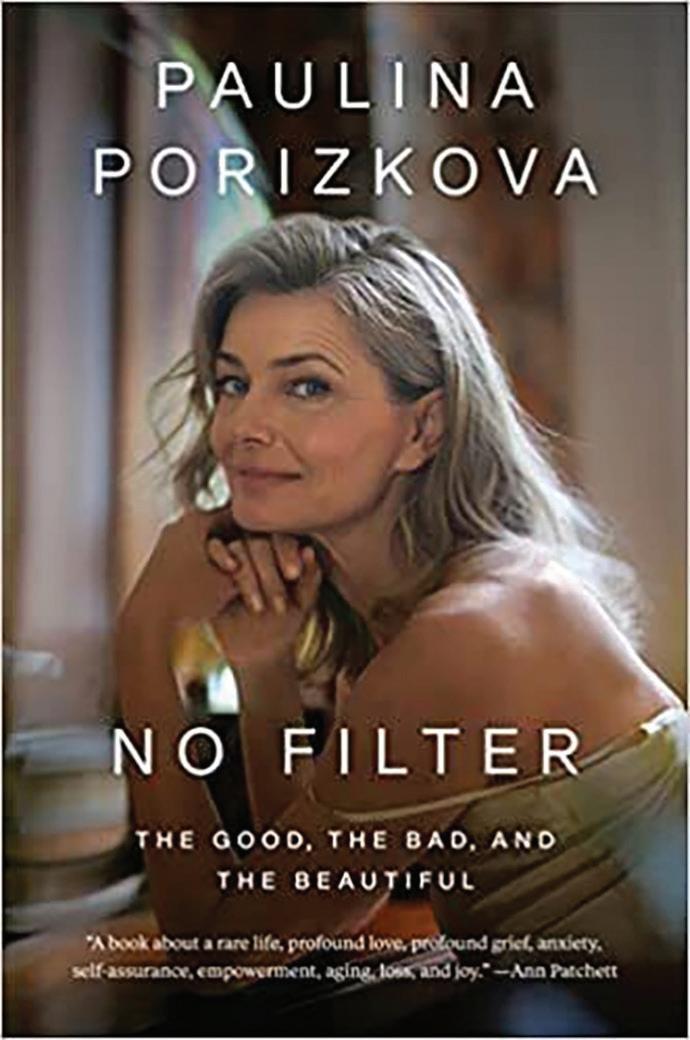
From the start, the connection between the two was magnetic. They shared a fondness for old movies, an easy rapport, and an obsessive kind of love. Ocasek started dictating what Porizkova could wear (big, baggy clothes) and isolating her from her friends. Rather than feel alarmed, she was flattered that he wanted her all to himself. She writes, “Our relationship was filled with pain and beauty, and I thought that was proof of its depth.”
Porizkova started to turn down jobs to be with her husband. By the time she realized they’d grown apart, she’d aged out of her industry. Modeling work dried up and she was dependent on Ocasek for an income.
Yet even after they divorced, they remained friends, caring for their two sons and continuing to share a house. She was the one to discover him dead in bed—and then that he’d cut her out of his will for “abandonment.”
No Filter really excels in Porizkova’s refusal to turn away from facing difficult feelings, especially grief. After Ocasek’s death, the “world around me ceased to exist as I knew it. Or, rather, everything stayed the same, but I could no longer relate to it… All the things around me became shapes without meaning, an obstacle course.” People tire of our heartache long before we do, Porizkova points out, especially as we get older. It’s an experience she compares to having food poisoning while someone knocks on the bathroom door, asking when you’ll be done. Another difficult thing about aging is that it can make you feel like an object of pity or scorn. Worst of all is not feeling seen at all. Porizkova, a woman who made millions from her good looks, now works to make peace with the lines on her face. Yet she still buys every cream on the market in what she knows is an absurd and futile pursuit of youth because this is “where visibility resides.” She writes candidly about the modeling business— the scrutiny, the perks, the sexual harassment on set (“I quickly assumed it was part of the job, and I wasn’t wrong”)—as well as her lifelong struggle with anxiety, traced to her forced separation from her grandmother. “Emotionally Botoxed” from antidepressants, she questions if there’s another way to cope: “What did I really feel like? I began to wonder and to want all my feeling back, even at the steep price of my misery.”
The essays all pick up on the same biographical threads, which can make reading them back to back sometimes feel repetitive. Had Porizkova more time, she might have shaped the material into a compelling memoir. Her self-awareness is the crucial thing that sets No Filter apart from other books in this genre. Porizkova’s authenticity is irresistible. She knows who she is. She knows what her hangs up are. And yet she remains open to change, chance, and possibility. She writes, “The idea of fate comforts me, because it allows me to believe that my life is guided by some greater meaning or purpose.”
Porizkova learned to read palms when she was a child from an eccentric old woman who lived upstairs in her grandmother’s house. “So much of our life in Czechoslovakia looked drab, gray, and beige,” Porizkova explains, yet Pani Rusova dyed her hair red and wore bright-colored clothing, like “a parakeet among sparrows.” Once vaguely embarrassed by the old woman’s bold style, Porizkova now admires it. “Standing out was a courageous choice,” she writes. And it’s clearly one that has continued to inspire her. After all, standing out isn’t only about being seen. It’s about being heard.
Near the start of this current stretch of my life, when I somehow—by circumstance, accident, and desperation—became a freelance writer, I wrote an article for a classical music publication (that still exists but is no longer a place for writing) about how there’s no such thing as difficult music. Except for typing out the words coherently, it was easy to write, because there really is no such thing as difficult music.
What “difficult music” means is the same across all genres: music that the people who book clubs, created concert programming, and produce and sell records, think is too difficult—too out of the ordinary, too alienating, too obscure—to sell to listeners and audiences. Probably the most salient example of this is atonal composition in the Western classical tradition, music by, and that followed, Schoenberg. But there’s plenty of other examples, like Merzbow, late John Coltrane, Metal Machine Music, and Schoenberg was far from the first composer in the last 500 years to be thought of as difficult.
The difficulty is not real, of course, and Schoenberg, Merzbow, Coltrane, Lou Reed, and others have audiences, they always have had them. The idea of difficulty comes from a small group of people who have been in positions to decide what others should get to see and hear. We don’t need the long view of history to show that they have essentially always been wrong—at the end of last month, the Metropolitan Opera announced that they were going to be cutting out 19th century works like Verdi’s Don Carlo in favor of more modern and contemporary operas, like Kevin Puts’ The Hours, which premiered at the house in the fall. The criteria was money, and ticket sales were strong enough for the modern works, and soft enough for some of the older ones, that the Met let the audiences decide for them. (As a critic who loves Don Carlo and has reviewed both productions, this is a wise decision. Don Carlo is a fantastic opera but a specialty one, too enormous and dark for a lot of Verdi lovers, and expensive to produce. The Hours was not just a popular success, it’s a terrific opera with some of the finest writing I’ve heard in a contemporary score, and it was encouraging to not only see so many people at the premiere but so many younger than the usual demographic at the Met.)
Audiences—you, me—get to decide often enough that there is an enormous amount of “difficult” music out there, more than anyone can probably listen to in one lifetime. Bebop, which has the same status in jazz that the Beethoven piano sonatas have in classical music, was once truly avant-garde music, and considered difficult by many record labels, venues, even by Louis Armstrong, and now the ongoing free jazz movement, including the Coltrane of Ascension and Live in Seattle, the recorded legacies of Cecil Taylor, Ornette Coleman, Sun Ra, Archie Sheep, The Art Ensemble of Chicago, and others are cornerstones
dar (handmade in Upstate NY made from raw milk cheese), and small batch cultured butter (grass-fed from Arethusa Farm in Connecticut).
While ACQ’s bread is an art, it’s also an intentional stand against a flawed food system. “I feel oddly about charging what I do…” began Steinbrenner, as we discussed the food system in the United States, the “de-
of jazz over the last 50 years (half of the entire history of the music). Free jazz was tremendously controversial when it first developed,
Jazz is impossible to imagine without this music, and without it things like the aesthetic and commercial lifeline of jazz-rock fusion would be unimaginable, because the foundations of that style, Tony Williams’ Lifetime and Miles Davis from In A Silent Way on, could not have been molded without ideas from from jazz.
The music has gained more vitality over the past two years.
It became the lingua franca of live streaming when venues were closed at the beginning of the ongoing COVID pandemic. No surprise that in that kind of contingent situation, the musicians who could adapt most easily and quickly were those who work from the foundation of making things up in the moment, often in very small (because of economic pressures) configurations. Streaming pickup improvisation dates were the thing, and more than a few albums come out of this, including the exceptional Some Kind of Tomorrow, improvised duets from Jane Ira Bloom and Mark Helias recorded across an internet connection (available at markhelias.bandcamp.com) and guitarist Stephen Gauci’s series of Pandemic Duets (gaucimusic.bandcamp.com).
Out of this, it feels like the audience for free music has expanded, that more people are listening to it and more people are willing to listen to it, and that simple proposition, that people are curious about free music (and not just what comes out of jazz) and interested in checking it out completely demolishes the fiction that there is such a thing as difficult music. It’s even gone beyond music itself and into a larger, mainstream culture via the Free Jazz collection of movies on the Criterion Channel, packed with fascinating and invigorating explorations of the musicians who are dedicated to free playing.
And as much as I encourage everyone to catch as much of this month’s 2023 NYC Winter Jazzfest (January 12-18 at various locations, full schedule at winterjazzfest.com—please wear a mask!) I’m puzzled and a bit disappointed by how the festival has been trending away from free music over the last several years—meaning from 2020 and then again last year, with remote performances, after the cancellation for 2021. There is an event honoring the great Marshall Allen with the Sun Ra Arkestra—and Ra’s expanding legacy, via the seemingly ageless Allen, is an important story of how free music appeals across generations and genres. There are also events and musicians that,
preciating costs of the ‘80s and ‘90s,” and the state of food today—where so much of our food is processed, packaged, and shipped, in a process that delivers products devoid of nutrition and flavor, and almost as little value to those who work within the system. ACQ’s prices instead reflect the true cost of quality ingredients from local producers. All the flour used is independently grown and freshly milled in New York and Pennsylvania, ensuring that the bakery engages in a healthy baking ecosystem. ACQ also moves
while not exactly free music, are right next to it, like the FLOCK UP AND FLY tribute to jaimie branch, January 15 at Nublu, and appearances by Mary Halvorson and Kris Davis, and an evening with a listening session to Pharoah Sanders’ 1973 Elevation LP, followed by a live “reinterpretation.”
But in the overall context of the Jazzfest, that’s a surprisingly small amount. As the festival, including the wonderful Marathon nights, has moved away from the New School/Greenwich Village locus to scattered venues, so the styles have become more scattered and moved away from the free side to more mainstream ideas, like a focus on Parisian jazz and a Verve Records showcase. The Marathons again cover two nights, January 13 and 14, the former in Manhattan and the latter in Brooklyn. The Manhattan one is walkable, stretching across town from City Winery on 11th Avenue to Nublu on Avenue C and up to the Jazz Gallery on Broadway. There is the usual impossibility of making it to all sets in time, as those from Immanuel Wilkins, Adam O’Farrill, Chris Lightcap, Joel Ross, Marta Sánchez, and others overlap, and Lakecia Benjamin and Craig Taborn both start at 11—the freest set will likely be the Halvorson/Courvoisier Duo at the Jazz Gallery, 9:30.
The following night is concentrated in Wiliamsburg (I know, right?). Certainly the highlight is at Superior Ingredients, once you get past Gilles Petersen’s 90 minute DJ set: Jamaladeen Tacuma, Makaya McCraven, Irreversible Entanglements, Nate Smith/Jason Lindner/Tim Lefebvre, and a late-night set from A Joyful Noise. That’s easily the most concentrated hipness of the entire festival. William Parker’s Piano Trio plays 10 pm at Loove Labs, for some more taste of freedom, and the Brooklyn night does cover a ton of stylistic ground. Just don’t look for utter freedom. But then, now that people are back together, though not necessarily in safety, maybe freedom is not exactly what the people want.

beyond attempting to repair the damaged food system by giving back to the community. Each week the bakery donates 100 portions of milk bread to the Chinese Community Council in Sunset Park and all loaves that are not sold are donated to other local mutual aid groups.
Visiting my mother over the holidays, she picked up a big sourdough loaf from Wegmans for us to enjoy. The next morning, I eagerly toasted a slice and smothered it in avocado and ol-
ive oil. As I bit into the fat-laden toast, I knew right away—I’d been spoiled by ACQ. For hundreds of years, bread has been a necessity in many cultures, and while ACQ’s prices push their bread into an almost luxury category, the difference is felt in each bite and in each stage of the baking process— from sourcing to labor. Maybe the problem isn’t that ACQ bread costs $11, but that we live in a society where so few items are grown or made in a healthy, sustainable way for both producers and consumers.



 by Marie Hueston
by Marie Hueston
Decoupage—the art of adhering cut paper onto objects—dates back centuries and has been used over the years to create one-ofa-kind boxes, furniture, frames, vases and more. With scraps of holiday gift wrap and a minimal amount of additional materials, you can turn an unassuming item in your home into an eye-catching accessory. Here’s how to start:
Choose the item you want to decorate. This holiday season, I received a lot of chocolates. Rather than toss all the containers the chocolates came in, I decided to use one for this project and transform it into a small keepsake box. If you don’t have a similar style of box, decoupage also works well on picture frames, jewelry boxes, vases, lamp bases, and basically anything with a flat surface that can be adorned.


Cut and organize the paper scraps you want to use. To create a base on which to work, I covered the exterior of my box in a small polka dotted pattern and covered the interior with large poinsettia pattern for a fun surprise when the box is opened. Next I cut narrow strips of striped paper, berry clusters and a snow globe to decorate the top and sides of my box.
Coat the surface of your object with adhesive medium and position your paper. If you are using school glue like me, dilute the glue in a plastic cup using three parts glue to one part water. (If you are working with Mod Podge, there is no need to dilute it.) Use the paint brush to coat the surface of the item you are decorating and carefully place your cut paper down on top. Gently press out any creases with your fingers or a small spoon.
placed one berry cluster on each side. On the top of my box, I crisscrossed the narrow strips of striped paper, three in one direction and three in the other, to mimic a woven surface, then placed the snow globe in the center. When you are done, apply a finishing coat of adhesive over the top of your design to create an even surface then allow it to dry completely.

Choose the paper you want to work with. Lay out scraps of gift wrap on a flat surface and look for patterns or colors that complement each other. Red, white and green were the dominant colors in the swatches I chose. It’s also a good idea to have some paper with patterns as well as some with clearly defined images that can be prominently featured on your finished work, like the birds, berries,
Gather the other materials you’ll need. In addition to the gift wrap and the object you’ll be decorating, you’ll need a scissor, pencil, paintbrush, and adhesive medium. I used school glue which I diluted slightly, but the most common decoupage medium is something called Mod Podge, an inexpensive product available in art stores or online at Amazon or craft supplies websites.